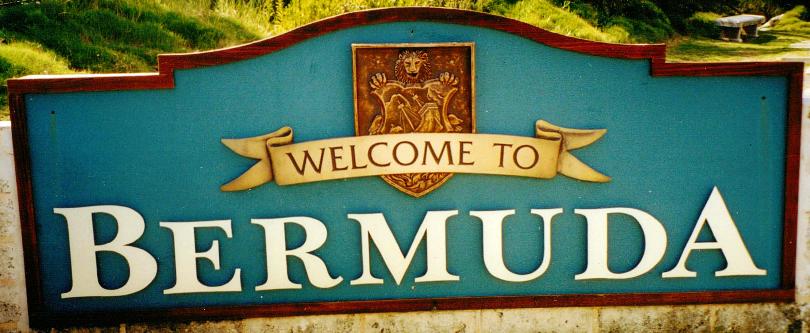
Click on graphic above to navigate the 165+ web files on this website, a regularly updated Gazetteer, an in-depth description of our island's internally self-governing British Overseas Territory 900 miles north of the Caribbean, 600 miles east of North Carolina, USA. With accommodation options, airlines, airport, actors, actresses, aviation, banks, beaches, Bermuda Dollar, Bermuda Government, Bermuda-incorporated businesses and companies including insurers and reinsurers, Bermudians, books and publications, bridges and causeway, charities, churches, citizenship by Status, City of Hamilton, commerce, communities, credit cards, cruise ships, cuisine, currency, disability accessibility, Devonshire Parish, districts, Dockyard, economy, education, employers, employment, environment, executorships, fauna, ferries, flora, former military bases, forts, gardens, geography, getting around, golf, guest houses, highways, history, historic properties, Hamilton, House of Assembly, housing, hotels, immigration, import duties, internet access, islands, laws, legal system and legislators, main roads, marriages, media, members of parliament, money, motor vehicles, municipalities, music and musicians, newcomers, newspaper, media, organizations, parks, parishes, Paget, Pembroke, performing artists, residents, pensions, political parties, postage stamps, public holidays, public transportation, railway trail, real estate, registries of aircraft and ships, religions, Royal Naval Dockyard, Sandys, senior citizens, Smith's, Somerset Village, Southampton, St. David's Island, St George's, Spanish Point, Spittal Pond, sports, taxes, telecommunications, time zone, traditions, tourism, Town of St. George, Tucker's Town, utilities, water sports, Warwick, weather, wildlife, work permits.
![]()
By Keith Archibald Forbes (see About Us).
In 1936, decades before Keith and his siblings were born, his father pioneered the radio direction finding system that was instrumental in commercial airlines flying into Bermuda and Keith's interest in Bermudiana began accordingly. His other files on Bermuda relating to aviation include Airlines serving Bermuda - Bermuda International Airport - US Military Bases in Bermuda from 1941 to 1995. Welcome to this special file on how these islands got their first aircraft, the men behind the initiatives, others who are etched permanently in Bermuda history, how Bermuda established several enduring claims to fame - and more.
![]()
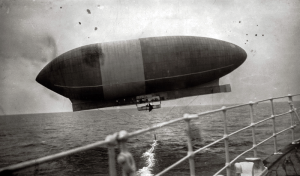 A
flight in an ungainly hydrogen-filled
blimp which ended in near-disaster off Bermuda. The airship “America”, long
consigned to footnote status by aviation historians, was the ambition of the six
adventurers — and one feline – involved in the attempt. Their
attempt to cross the Atlantic came just a decade years after the first
modern dirigible was launched and seven years after the Wright Brothers’ motorized glider
sputtered into the air at Kitty Hawk, North Carolina. American newspaper
publisher Walter Wellman also purchased a sturdy - subsequently famous -
lifeboat from an English firm in 1910 as he was preparing to attempt the first
powered flight across the Atlantic in the ‘America.’ In addition to its
basic role as a refuge for the crew should they be forced down at sea, the
lifeboat doubled as a kitchen, pantry, dispensary, smoking lounge and radio
position. It also served as a hiding place for “Kiddo,” a feline stowaway
discovered by Mr. Wellman and his five man crew after take-off on October 16,
1910 from New Jersey. The airship, its crew and the cat remained aloft for 38
hours, but were forced down just off Bermuda due to a combination of engine
problems and bad weather. Their salvation depended on crossing the path of a
Royal Mail Ship, the ‘Trent’, which (they) knew was sailing from Bermuda to
New York at the time. At 5 a.m. on the morning of October 18 Wellman
spotted the ship. Soon, the ‘America’s’ crew were communicating with the
‘Trent’ by Morse code and then by radio. After a hazardous operation, with
the airship being blown along at speeds of up to 25 knots, the lifeboat was
eventually lowered safely into the sea, complete with all crew, including the
cat. The airship, still airborne, and now considerably lighter, vanished over
the horizon. “The ‘Trent’ gave the crew safe passage to New York, where
they were welcomed as heroes. ‘Kiddo’ the cat was especially well received
and put on display in a gilded cage in the famous Gimbels department store. He
later went to live a quieter existence with Wellman’s daughter, Edith. The
adventure made front page news around the world.
A
flight in an ungainly hydrogen-filled
blimp which ended in near-disaster off Bermuda. The airship “America”, long
consigned to footnote status by aviation historians, was the ambition of the six
adventurers — and one feline – involved in the attempt. Their
attempt to cross the Atlantic came just a decade years after the first
modern dirigible was launched and seven years after the Wright Brothers’ motorized glider
sputtered into the air at Kitty Hawk, North Carolina. American newspaper
publisher Walter Wellman also purchased a sturdy - subsequently famous -
lifeboat from an English firm in 1910 as he was preparing to attempt the first
powered flight across the Atlantic in the ‘America.’ In addition to its
basic role as a refuge for the crew should they be forced down at sea, the
lifeboat doubled as a kitchen, pantry, dispensary, smoking lounge and radio
position. It also served as a hiding place for “Kiddo,” a feline stowaway
discovered by Mr. Wellman and his five man crew after take-off on October 16,
1910 from New Jersey. The airship, its crew and the cat remained aloft for 38
hours, but were forced down just off Bermuda due to a combination of engine
problems and bad weather. Their salvation depended on crossing the path of a
Royal Mail Ship, the ‘Trent’, which (they) knew was sailing from Bermuda to
New York at the time. At 5 a.m. on the morning of October 18 Wellman
spotted the ship. Soon, the ‘America’s’ crew were communicating with the
‘Trent’ by Morse code and then by radio. After a hazardous operation, with
the airship being blown along at speeds of up to 25 knots, the lifeboat was
eventually lowered safely into the sea, complete with all crew, including the
cat. The airship, still airborne, and now considerably lighter, vanished over
the horizon. “The ‘Trent’ gave the crew safe passage to New York, where
they were welcomed as heroes. ‘Kiddo’ the cat was especially well received
and put on display in a gilded cage in the famous Gimbels department store. He
later went to live a quieter existence with Wellman’s daughter, Edith. The
adventure made front page news around the world.
![]()
Under the command of Squadron Leader W. C. Hinks. She was finally commissioned on November 6, 1918, just before the armistice with Germany. From her evolved the R32 and much interest from the USA.
![]()
"What this Bermudian
did above
the battlefields of Europe as a Royal Flying Corps pilot flying for his
mother-country. Earlier, he'd been in the Bermuda Volunteer Rifle Corps, was one
of their contingent shipped to England to join Lincolnshire Regiment. From there
he was accepted by the Royal Flying Corps, later the Royal Air Force. A
formation of British machines had been carrying out some important operations
well over the German lines. On the return journey the weather suddenly became
hazy, and one of the pilots, Lieutenant Spurling, lost touch with the formation in the clouds. The
British pilot set his course due west, and flew on for some time. Having made
what he thought was sufficient allowance for the distance to the British lines,
he put down the nose of his machine and saw beneath him an aerodrome. The wind,
however, freshened considerably, and so far as covering the ground was concerned
he had been making only half the speed shown on airspeed indicator. As he
circled over the aerodrome, preparing to land, a German Scout machine suddenly
appeared from the clouds above him, and immediately to attack. Marveling at the
unusual temerity of the German in daring to attack over an English aerodrome,
the British pilot checked his descent and opened fire on his attacker. At this
moment he became aware that no fewer than thirty German machines were actually
climbing towards him from the aerodrome. Realizing now that he was over an enemy
aerodrome, he dived towards the first group of German squadrons, both he and his
observer firing on every machine upon which they could get their guns to bear.
The enemy pilots appeared too bewildered by the outstanding audacity of the
British airmen to attack them effectively at first, and their own tremendous
numerical superiority seemed further to confuse them. One German plane burst
into flames in the air, two more went down spinning and side slipping completely
out of control. Four enemy scouts had by this time got into position to attack,
clinging to the tail of the British machine. Two of these were sent blazing to
earth. Shaking himself clear of the remainder, the British pilot opened his
throttle and sped homewards leaving on that German aerodrome three blazing
wrecks, and two other crashed machines as a highly satisfactory outcome of what
might have proved a fatal mistake."
Lieutenant Spurling flew one of the new Sopwith Snipe aircraft. Manufacturer: Sopwith Aviation Company. Type: Fighter. First Introduced: 1918. Number Built: 497. Engine: Bentley B.R.2, 230 hp. Wing Span: 31 ft 1 in. Length: 19 ft 10 in. Height: 9 ft 6 in. Empty Weight: 1312 lb. Gross Weight: 2020 lb. Max Speed: 121 mph. Ceiling: 19,500 ft. Endurance: 3 hrs. Crew: 1. Armament: 2 machine guns.
![]()
Earlier, he'd been awarded another medal, the Star Trio. He was presented with the DFC for flying his bomber into the centre of a formation of some 30 German planes. He and his observer shot three down in flames and sent two others crashing to the ground. He had sent a postcard sent to his half-sister Ethel in Bermuda after he was injured twice on the front line. He and his wife had a daughter, Ilys Spurling Marsh, who was brought up at "Penarth", the family home in Rosemont Avenue. Her father rarely talked about his wartime experiences, including the heroics which led to his DFC. Her father, known as Rowe, was born in 1896 and joined the Bermuda Volunteer Rifle Corps in February 1915, sailing with the first war contingent for England in May and soon after being posted to the Lincolnshire Regiment. His 1916 postcard to Ethel describes how was "wounded in the hand" on July 3 and returned to the front to be "wounded in the foot and buried for a few hours" on July 13. He was commissioned in July 1917 and qualified for service in the Royal Flying Corps in September, before being posted to France and joining 49 Squadron in July 1918. His DFC was announced in the London Gazette on this day, in a report which described how he got separated from his formation and was attacked by a Fokker biplane at 2,000 feet. "Lt. Spurling then observed some 30 machines of the same type, heavily camouflaged; with great gallantry he dived through the centre of the formation, shooting down one machine in flames; two others were seen to be in a spin." Five of them then closed on his machine, but by skilful maneuvering, Lt. Spurling enabled his observer to shoot down two of these in flames. The three remaining aircraft broke off the combat and disappeared in the mist. A fine performance, reflecting the greatest credit on this officer and his observer." He returned a hero to Bermuda after the First World War and obtained his commission again in World War II, serving in Canada with RAF Ferry Command, where he was credited with unearthing a Nazi spy. He married Ilys Darrell in 1948 and ran a taxi service on the Island, as well as importing mushrooms and starting the Rowe Spurling paint supply company. He and his wife moved to Guernsey in the early 1970s but eventually sold up there with a plan to return to Bermuda. Instead, Lt. Spurling developed Alzheimer's Disease and died in a nursing home in England, aged 88. His body was flown back to the Island for a funeral at the Anglican Cathedral and he is buried in Pembroke.
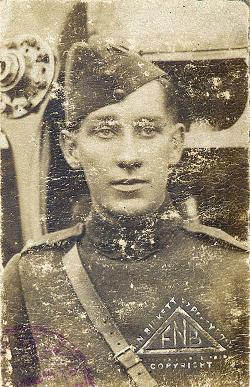
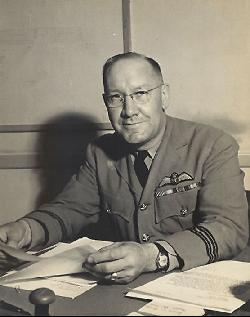
Lieutenant Arthur Rowe Spurling in WW1 (left) and as a Royal Air Force officer in WW2 (right)
![]()
It was a Burgess-Curtiss N-9H Jenny, with registration number A-2646, powered by a Wright-Hispano 150 horsepower engine. It was a naval scout hydro-airplane that normally traveled on the deck of her mother ship the USS Elinore.

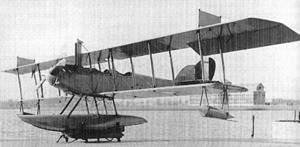
The aircraft had a gross weight of 2765 pounds and a top speed of 80 miles per hour. The 8725 ton cargo vessel was launched in 1917 as the General de Castelnau and was transferred from the US Shipping Board to the US Navy for war service. After the war, she had dumped gas drums and mustard gas shells in deep waters off Virginia. On this day, she was in the town of St. George after a scientific research voyage south of Bermuda, sheltering from bad weather. The Bermuda flight was not scheduled but poor weather made it happen. Bermudians got their first sight of an aircraft. At the Governor's request it was flown over the City of Hamilton Harbor by United States Navy Ensigns G. L. Richard and W. H. Cushing, They invited Governor Sir James Willcocks to accompany them and he accepted. He dropped from the open cockpit the first "Air Letter" posted in Bermuda. In front of a huge crowd he was rowed out to the aircraft waiting near the Royal Bermuda Yacht Club. Piloted by Richard, they were airborne at 12.45pm, flying towards Dockyard and returned safely to alight in the harbour at 1.30pm. A proposed further trip with his wife was abandoned after the engine began to play up. A total of 560 N-9s were built during World War I, most of which were "H" models. Only 100 were actually built by Curtiss. Most were built under license by the Burgess Company of Marblehead, Massachusetts. Fifty others were assembled after the war, from spare components and engines by the U.S. Navy at Naval Air Station Pensacola in Florida.
![]()
Flown by Captain John Alcock, Royal Air Force, and Lieutenant Arthur Whitten-Brown, Royal Flying Corps, who took off from St. John's, Newfoundland and landed at Clifton, Ireland in 16 hours and 12 minutes.
![]()
Spanning the length of two football (soccer) pitches, the flight was made only a few weeks after the success above of Alcock and Whitten-Brown. Among the 30 crew on board was 42-year old engineer George Graham from near Cupar, Scotland. The airship flew from East Fortune, Haddington, Scotland, the main Scottish airship base on the Firth of Forth, to Mineola, Long Island, New York, and back again. A northerly coastal route was decided on, in case the airship ran out of fuel for its engines. Two Royal Navy warships, HMS Renown and HMS Tiger, were used as supply vessels in case of difficulty, also to offer meteorological reports and if necessary to take the airship into tow. It was the first manned flight from anywhere else to the USA and was completed because of American interest in the airship. At that time, the USA had no experience with a rigid airship. The giant Royal Air Force/Royal Naval Air Service airship, gassed to its limit and loaded to its full capacity, was eased out of its shed by 700 members of the handling party. The engines were signaled to commence, the propellers roared into life and the airship was on her way to the USA with the strains of jazz coming from a gramophone. Hours later, it was discovered that a teenage crew member who was supposed to have been left behind because the dirigible was too heavy had stowed away on board. He also brought the ship's mascot, a tabby cat called Whoopsie. There were also two dogs. The airship arrived four days later, having traveled at an average 43 miles per hour, with only 140 gallons of fuel remaining. Before it tied up, Major Jack Pritchard, British Army, donned a parachute and dropped to the ground to become the first man to arrive in the USA from abroad by air. He did so because there was not yet any other way for the airship to be properly tethered to the ground and it was his job to organize it from the ground. The welcome from the USA made world headlines. The airship was in the USA for three days fore sailing back to the UK, not to East Fortune because of bad weather but to Pulham Air Station near London.
![]()
The achievements of the first transatlantic flight in a Vickers Vimy bomber, by Captain John Alcock, Royal Air Force, and Lieutenant Arthur Whitten-Brown, Royal Flying Corps, and first landing of an airship in the USA closely thereafter gave fresh impetus to aviation in Bermuda. Major Henry "Hal" Kitchener of the Royal Flying Corps - a nephew of Field Marshal Earl Kitchener of Khartoum and son of a former Governor, returned to Bermuda as a war hero. He teamed up with Major Hemming of the AFC, also a Great War aviator. They brought to Bermuda several aircraft most islanders had never seen before.


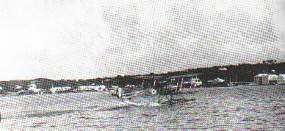
They were three Avro 504K sea planes, two 2-seat Standard planes, a three seat model and three four seat Supermarine Channel Mark 1 flying boats. The two men wanted to make Bermuda a base for aeronautic surveys of Newfoundland in Canada and in Central and South America. Among their exclusive rights was one to spot whales from the air, to create a revival of Bermuda's once-dominant whaling industry. They selected Hinson's Island, which Major Kitchener owned after 1920, as their base and built two wood framed hangers there. They also built a slipway to serve both hangers. The slipway had rails to move the aircraft to and from the water. But their plans were ahead of their time. Their aircraft (right) were distinctive sights above the skies of Bermuda. They were fuelled by the Esso Company's West India Oil Company's wagons that put their cargoes of fuel on boats to make the crossing across Hamilton Harbor to the aircraft's' terminal on Hinson's Island. The aviation company did not survive for long. However, in its heyday it was the way many Bermudians got their first flight in an airplane - and it provided the talk of the town for many weeks. Bermudians had to wait 17 more years before they could fly to another jurisdiction.
![]()
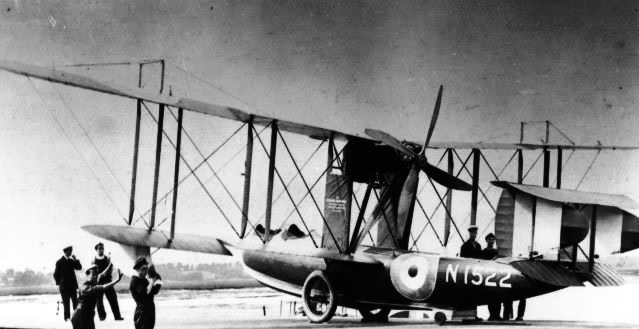
They were G-EAFF, G-EAEG and G-EAEJ, all still with their military colors, similar to the one shown above. They arrived by ship and joined the Avro aircraft of Bermuda and West Atlantic Aviation for sightseeing tours of Bermuda. They were based at Hinson's Island. The "Short" flight was for 10 minutes to Gibb's Hill Lighthouse then back to Hinson's Island; the "Middle Tour" was for 20 minutes, over Spanish Point, North Shore. South Shore; the "Grand" Tour over most of Bermuda; and "Special Charter" included stops. One of the latter was for the actress Pearl White.
![]()
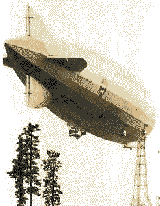 After a
safe 15-hour flight from the US Naval Air Station at Lakehurst, New Jersey,
USA, the famous United States Navy 656 foot dirigible airship the ZR-3 Los Angeles (ex LZ126) which had earlier made a unique appearance over
Washington, DC during the Presidential inauguration of President Herbert Hoover,
also made
history in Bermuda and in the process created a public sensation. In fact,
she visited the island twice in 1925. A 2.742 million cubic foot rigid airship,
she brought the very first delivery of
official "Airmail" (200 lbs or 90 kilos). The
Los Angeles was only a year old then. She was built in Friedrichshafen, Germany in
August 1924 by the Zeppelin
factory initially as LZ-126 and partially funded by Germany's war reparations
owed to the United States. She left Germany in mid-October 1924 for
delivery to the United States Navy. After a 3-day trans-Atlantic flight she
arrived at the US Naval Air Station, Lakehurst, New Jersey, where her
hydrogen-lifting gas was replaced by non-flammable helium. This greatly
increased her safety but also significantly reduced her payload and range. In
late November 1924 she was commissioned as the USS Los Angeles and began several
years of flight activity to explore her potential for Naval and commercial use.
Between February and May 1925 she flew twice to Bermuda and once to Puerto Rico.
On her first Bermuda visit, a storm prevented the docking of the airship. On board, guests included Rear Admiral William A.
Moffat, USN and Secretary of
the Navy , Theodore Robinson. As there was no suitable site for an airship
docking facility in Bermuda or Puerto Rico, the US Navy's oiler USS Patoka was
employed to moor her in both islands, with a mooring tower
on its stern. As a result, she could not land in Bermuda, instead dropped her cargo from the
sky. On her first visit, one bag of mail descended from her, over the grounds of
Government House, much to the amazement and delight of onlookers a safe distance
away. She then dropped two further mailbags not far from the home of the
Colonial Postmaster. The uniquely franked envelopes carried on the Los Angeles voyages are
much-prized by collectors. Sadly, in 1939 she was decommissioned and broken up
for scrap. Each round trip
from the New Jersey base to Bermuda took about 30 hours.
After a
safe 15-hour flight from the US Naval Air Station at Lakehurst, New Jersey,
USA, the famous United States Navy 656 foot dirigible airship the ZR-3 Los Angeles (ex LZ126) which had earlier made a unique appearance over
Washington, DC during the Presidential inauguration of President Herbert Hoover,
also made
history in Bermuda and in the process created a public sensation. In fact,
she visited the island twice in 1925. A 2.742 million cubic foot rigid airship,
she brought the very first delivery of
official "Airmail" (200 lbs or 90 kilos). The
Los Angeles was only a year old then. She was built in Friedrichshafen, Germany in
August 1924 by the Zeppelin
factory initially as LZ-126 and partially funded by Germany's war reparations
owed to the United States. She left Germany in mid-October 1924 for
delivery to the United States Navy. After a 3-day trans-Atlantic flight she
arrived at the US Naval Air Station, Lakehurst, New Jersey, where her
hydrogen-lifting gas was replaced by non-flammable helium. This greatly
increased her safety but also significantly reduced her payload and range. In
late November 1924 she was commissioned as the USS Los Angeles and began several
years of flight activity to explore her potential for Naval and commercial use.
Between February and May 1925 she flew twice to Bermuda and once to Puerto Rico.
On her first Bermuda visit, a storm prevented the docking of the airship. On board, guests included Rear Admiral William A.
Moffat, USN and Secretary of
the Navy , Theodore Robinson. As there was no suitable site for an airship
docking facility in Bermuda or Puerto Rico, the US Navy's oiler USS Patoka was
employed to moor her in both islands, with a mooring tower
on its stern. As a result, she could not land in Bermuda, instead dropped her cargo from the
sky. On her first visit, one bag of mail descended from her, over the grounds of
Government House, much to the amazement and delight of onlookers a safe distance
away. She then dropped two further mailbags not far from the home of the
Colonial Postmaster. The uniquely franked envelopes carried on the Los Angeles voyages are
much-prized by collectors. Sadly, in 1939 she was decommissioned and broken up
for scrap. Each round trip
from the New Jersey base to Bermuda took about 30 hours.
Her two later sister-ships the "Graf Zeppelin" and "Hindenburg" were destined to make history of their own across the Atlantic and over Bermuda before the next decade finished.
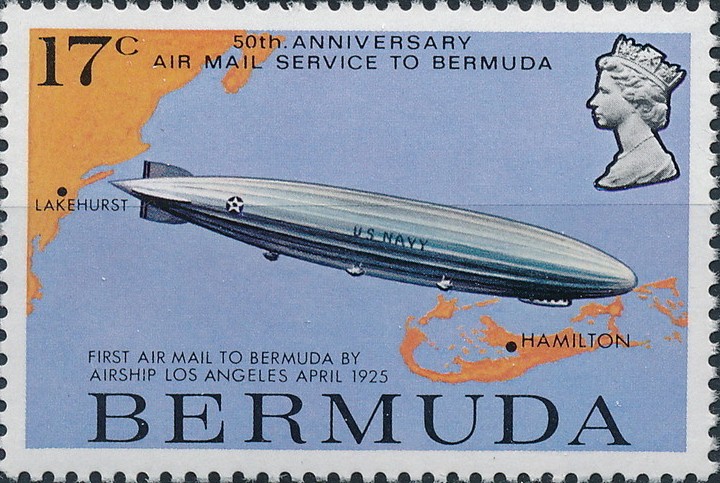
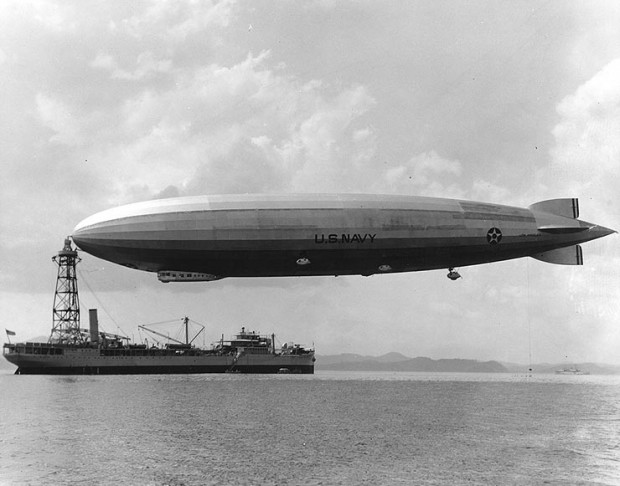
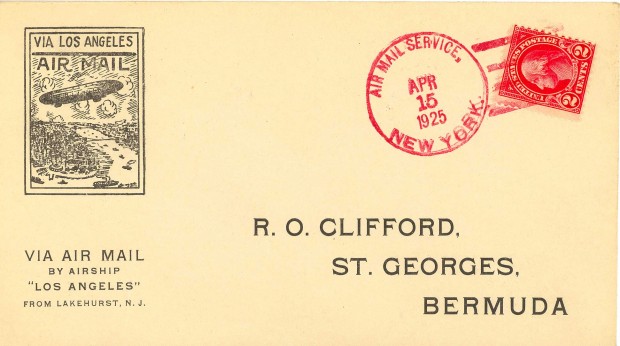
![]()
On this occasion, the docking in Bermuda with the USS Patoka was smooth with no storm and 100% successful. This time, not just one but three mailbags containing 2,341 - some accounts say 3,000 - items were dropped, close to the home of Bermuda's Colonial Postmaster. Incoming airmail was delivered and outgoing airmail was collected stamping, franking and delivery to via Lakehurst to New York.
![]()
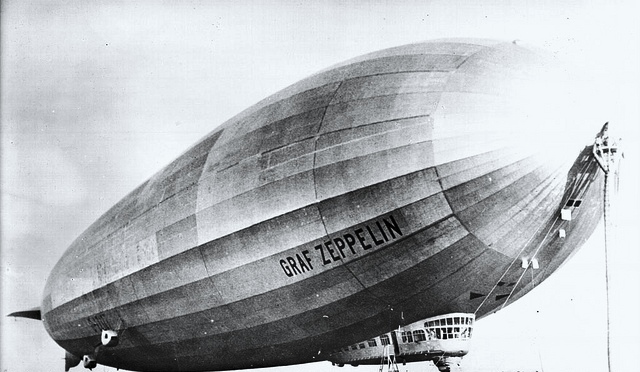
This 776-foot blimp was flying from Friedrichshafen in Germany to Lakehurst, New Jersey, also as war reparations to the USA. This was her first transatlantic flight, having made her maiden flight less than a month earlier. Her visit was unexpected, due solely to a potentially hazardous squall to the west of Bermuda. She did not stop, but passed directly over St. George's, much to the amazement of town residents. She dropped a packet of postcards, intended for delivery first to the town's post office and from there to New York, after a tear in the fabric of her top fin was repaired. Initially, this bag of airmail was feared lost. But a St. George's boatman retrieved the bag from the sea. The St. George's Post Office Postmaster, after seeing how the sea had soaked off the stamps of the postcards, dried them and applied a St. George's date stamp of October 15, 1928 as well as the "Air Mail Service Bermuda" hand stamp used three years earlier when the Los Angeles had visited Bermuda.
![]()
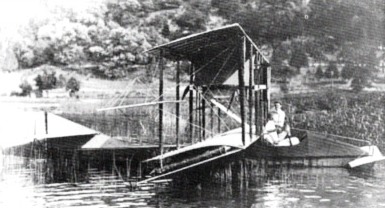
Captain W. N. Lancaster attempted to fly from Long Island, USA, to Bermuda in the Curtiss Flying Fish Ireland class seaplane, as part of an attempt on the London to Cape Town speed record for the Putnam Expedition. He was accompanied by Lieutenant H. W. Lyon and sponsor G. P. Putnam. He was not successful. The team tried again, this time from Hampton Roads, Virginia, again with no luck. Unconfirmed reports said the plane sank 185 miles from Bermuda.
![]()
![]()
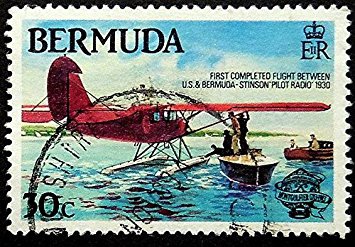 Three Americans began their own version of the Great American Dream - and
caused a great Bermuda one. Captain Lewis Alonzo Yancey, William H. Alexander and Zeh
Bouck were determined to carve out their own unique niche in aviation history by being the
first to make the then-hazardous journey by air from the North American mainland.
Their plane was a customized Stinson SM-1FS
"Detroiter" monoplane mounted on a pair of EDO floats, powered by a single 300
horsepower Wright Whirlwind motor, completely without navigational aids except a compass
and a single US Navy survey map. The plane had a top speed of 118 miles per hour, a
cruising speed of 100 miles an hour and a standard cruising range of 550 miles which left
no margin of error.
Three Americans began their own version of the Great American Dream - and
caused a great Bermuda one. Captain Lewis Alonzo Yancey, William H. Alexander and Zeh
Bouck were determined to carve out their own unique niche in aviation history by being the
first to make the then-hazardous journey by air from the North American mainland.
Their plane was a customized Stinson SM-1FS
"Detroiter" monoplane mounted on a pair of EDO floats, powered by a single 300
horsepower Wright Whirlwind motor, completely without navigational aids except a compass
and a single US Navy survey map. The plane had a top speed of 118 miles per hour, a
cruising speed of 100 miles an hour and a standard cruising range of 550 miles which left
no margin of error.
With Yancey navigating, Alexander piloting and Bouck operating his primitive, portable on-board radio equipment, the trio of intrepid aviators launched themselves and their flying machine, which they named Pilot Radio, into the skies above New York State and headed east, hoping to make a non-stop flight to Bermuda and a pinpoint landing in Bermuda - an impossible ambition with their lack of radio-direction-finding equipment and the fact that such RDF equipment capable of sending a guiding beam to an aircraft in flight was not to be introduced into Bermuda until six years later.
Nevertheless, clad in their heavy leather flying suits and goggles, they gunned their frail craft over the Atlantic - and prayed that their fates would indeed lead them to Bermuda and into fame and fortune. They were lucky. When night embraced the Atlantic ocean and sky in a curtain so thickly black that they could not even see the stars to use basic celestial navigational principles they were lost, their map and compass useless. They were also out of fuel. Their aircraft had consumed more than had been estimated, as its propeller had bitten into the winds and salt spray of the Atlantic air-currents.
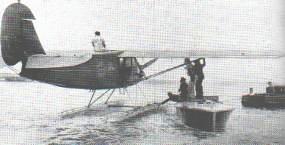 They had no option but to land on
water, to wait out the long hours of dark. Somehow, their plane floated, instead of
sinking. Their hopes had not been entirely dashed. They knew they were somewhere in the
vicinity of Bermuda. With the wireless equipment provided by the radio magazine that had
sponsored them, which resulted in the plane being named Pilot Radio, they sent their
call-sign '2XBQ' repeatedly into the night ether.
They had no option but to land on
water, to wait out the long hours of dark. Somehow, their plane floated, instead of
sinking. Their hopes had not been entirely dashed. They knew they were somewhere in the
vicinity of Bermuda. With the wireless equipment provided by the radio magazine that had
sponsored them, which resulted in the plane being named Pilot Radio, they sent their
call-sign '2XBQ' repeatedly into the night ether.
Little did Yancy, Alexander and Bouck know at the time that they were not the only ones to incur a sleepless, worried night. In Bermuda, the staff at the St. George's Cable & Wireless Station had also been up all night, transmitting on the 600 meters wavelength, trying to contact the plane. In the very early half-light hours of April 2, the by then very weak '2XBQ' signal transmitted from the plane on batteries that had nearly run down, was heard by Wireless Station operators in Bermuda. Using their more powerful set, they gave Morse-code directions to the downed aviators. They also put out a call to the West India Oil Company at St. George's, which supplied a boat and crew to take out and pump a fresh supply of fuel for the aircraft of the intrepid aviators. And it was from the Wireless Station that the authorities and general public of Bermuda were first informed of a drama at sea, with Captain Yancey and his crew having announced their incredible intention of trying to take off again from the Atlantic, to resume their epoch-making flight to Bermuda. Their dream of making the first-ever direct flight from North America to Bermuda was still intact, even if it had been dented a little with a nightfall touchdown on the Atlantic Ocean surface.
Later that day, Yancey, Alexander and Bouck successfully took off from the ocean and sighted Bermuda. They made a triumphant landing at 10 am in Hamilton Harbor. When they set foot on dry land, they were mobbed by ecstatic Bermudians - and hailed as trailblazers. Among the greeters was a Miss Kathleen Jones who presented Easter lilies to the crew of the plane. In the celebrations that followed, which included several fly-pasts of "Pilot Radio" around Bermuda, they were presented with $1,000 apiece ($1,500 from the Trade Development Board, $1,000 from the Hotel Men's Association and $500 from the Bermuda Poll Committee).
Bermudians saw in that unique flight a vision of things to come - of aircraft that would one day leave the USA loaded with US tourists, bound for a holiday in our beautiful Islands. But Captain Yancey and his crew uttered words of caution to temper the jubilation. He prophesied that regular service by airplane would commence to Bermuda only when aircraft and Bermuda were equipped with proper RDF equipment to aid pilots and navigators. He also decided that it would tempt fate too much to attempt to fly back to the US mainland from Bermuda in Pilot Radio. So he, Alexander and Bouck dismantled and crated it for departure on the MS Bermuda - and left on that ship, for a slower but safer voyage by sea back to their homeland. However, they did leave one part of their historic aircraft behind them. They presented the Bermuda Historical Society with its gyro compass. Unfortunately, no one knows what happened to the historic instrument. Searches have found that it is no longer in the Society's hands. It may have been misplaced or stolen years ago.
![]()
With Bermuda's earlier first aircraft arrival milestone still capturing media attention from three months earlier, Roger Q. Williams, barnstormer, stunt and test pilot, with Canadian World War I veteran Captain J. Errol Boyd as co-pilot and Lieutenant Harry P. Connor, a U.S. Navy-trained navigator, arranged to fly Miss Columbia, a Wright-Bellanca WB-2 single-engine monoplane with wheels, on a nonstop, round-trip flight to Bermuda from Long Island. Miss Columbia had already achieved fame as the plane flown by Clarence D. Chamberlin and Bert Acosta when they set a world’s endurance record of more than 51 hours in May 1927. Chamberlin and Charles A. Levine then flew it nonstop 3,910 miles the following month to Eisleben, Germany. The announced purpose of a round-trip Bermuda flight without landing, according to Williams, was to ascertain if, with the navigation equipment then available, a regular airline service could be established between New York and Bermuda. He said that if a small, single-engine plane such as Miss Columbia could make the round trip and find the island with ordinary navigational methods, scheduled passenger flights to the island would be easily achievable with radio-equipped amphibian planes powered by two or more engines. The Miss Columbia trio departed from Roosevelt Field on Long Island early in the morning that day, in clear weather. Connor had no problems with the navigation, but since there was no radio on board, he was unable to report their progress as Bouck had done three months earlier on Pilot Radio. The skies gradually darkened as they flew on, and as they approached Bermuda shortly after noon they ran into a driving tropical storm. ‘Within forty miles of the island, we struck one of the fiercest rain squalls I have ever flown through,’ Williams said in a New York Times interview after the flight. ‘We went down to 200 feet and came in over the city [Hamilton] and circled. It looked like a landing [was inevitable] on a field I couldn’t see, for that water got to the magneto and the engine began to kick up. We circled for twenty minutes, hoping for a place to land or a let-up in the rain, but neither showed up. It looked like a crash to me. Finally, we turned seaward again because there was nothing else to do. A few miles out the rain stopped, the sky cleared and the old motor started doing its old stuff again, so we came home. What pleases me is we struck those little chunks of land, scattered over only eighteen miles of the Atlantic Ocean, right on the nose, without any radio bearings." What Williams did not mention was that they had dropped a bag of mail on the Belmont Manor Golf Club grounds, to the rear of the Hotel Bermuda. When a reporter asked him about landing there, Williams said the golf course was the only possible stretch of land where a landing might have been possible, but that a crackup was ‘certainly a possibility.’ The return flight to New York was uneventful. They made a night landing at Curtiss Field instead of Roosevelt Field because of thick haze over their departure airport. The elapsed time for the 1,560-mile flight was 17 hours 8 minutes, and they had enough fuel remaining to fly another 1,000 miles. (The trip served as a practice run in the same Bellanca for a transatlantic flight by Boyd and Connor from Newfoundland to England the following October). The successful round-trip flight to Bermuda had an unpleasant brief aftermath for Williams. The Bermudian government sent a protest to the U.S. State Department because the fliers had not notified the island’s authorities about their plans and had not received permission beforehand. Williams’ pilot license was suspended by the Aeronautics Branch of the Department of Commerce for several weeks as a result.
![]()
With Mrs. Beryl Gwyn Hart of Ohio and Lieutenant William S. McLaren of the US Naval Reserve aboard, the white painted Bellanca CH300 Pacemaker high wing seaplane Tradewind landed safely in Bermuda from Hampton Roads, Virginia. It was a perfect landing in Hamilton Harbour after an 8-hour flight. It was much-celebrated in Bermuda as the first completed flight between the U.S. and Bermuda, and the first leg of a projected trans-Atlantic, New York-Bermuda-Azores-Paris flight designed to demonstrate the commercial possibilities of trans-Atlantic flying.
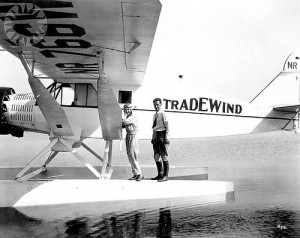
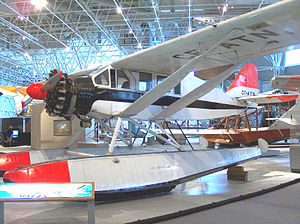
![]()
But after just under three days in Bermuda, the plane and by-then-famous couple, after partying galore in Bermuda, took off on January 10, 1931, from Hamilton Harbour to the Azores and then disappeared into a huge black cloud. Neither the occupants or aircraft were never heard from again. Mrs Hart was a contemporary of Amelia Earhart and almost as well known as the latter. The Bellanca CH-300 Pacemaker was a six-seat utility aircraft built primarily in the United States in the 1920s and 1930s. It was a development of the Bellanca CH-200 fitted with a more powerful engine and, like the CH-200, soon became renowned for its long-distance endurance, so much so that a 400 was later successfully introduced.
![]()
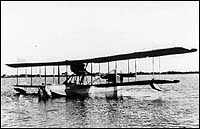 Pilot C. Nelmes of Bermuda,
a local aviation piuoneer, was killed when his aircraft an Ely- Curtiss HS-2L aircraft,
of pre-World War 1 vintage, of the type once used by the
United States Navy and Canadian authorities but later deemed by the former to be
too dangerous to fly after 1928, crashed at Grassy Bay off HM Dockyard when
over-flying a ship. There were two survivors. It is believed that Nelmes
bought his Curtiss HS-2L
in Canada, from OPAS. This aircraft is believed to have been one of the first
aircraft registered in Bermuda. This flying boat made
its debut as a warplane by patrolling against enemy submarines. The manufacturer
was Curtiss Aeroplane and Motor Co. Inc. of Hammondsport and Buffalo, NY, and
the patrol flying boat was built under license by Galaudett Flying Boat Company,
College Point, Long Island, NY. Its wingspan was just over 74 feet; height 14'
7"; length 38' 6"; top speed 91 mph; range 517 miles; empty weight
4,700 lbs; gross weight 6,432 lbs; fuel capacity was 141 gallons; crew were
three people; service ceiling was 5,000 feet; engine was a Liberty 12 at 350 HP
and the sea level climb was 220 feet per minute.
Pilot C. Nelmes of Bermuda,
a local aviation piuoneer, was killed when his aircraft an Ely- Curtiss HS-2L aircraft,
of pre-World War 1 vintage, of the type once used by the
United States Navy and Canadian authorities but later deemed by the former to be
too dangerous to fly after 1928, crashed at Grassy Bay off HM Dockyard when
over-flying a ship. There were two survivors. It is believed that Nelmes
bought his Curtiss HS-2L
in Canada, from OPAS. This aircraft is believed to have been one of the first
aircraft registered in Bermuda. This flying boat made
its debut as a warplane by patrolling against enemy submarines. The manufacturer
was Curtiss Aeroplane and Motor Co. Inc. of Hammondsport and Buffalo, NY, and
the patrol flying boat was built under license by Galaudett Flying Boat Company,
College Point, Long Island, NY. Its wingspan was just over 74 feet; height 14'
7"; length 38' 6"; top speed 91 mph; range 517 miles; empty weight
4,700 lbs; gross weight 6,432 lbs; fuel capacity was 141 gallons; crew were
three people; service ceiling was 5,000 feet; engine was a Liberty 12 at 350 HP
and the sea level climb was 220 feet per minute.
The United States Navy flew them on anti-submarine duty off the East Coast from bases in Nova Scotia. When WW1 was over, they donated twelve of the planes to Canada. In 1919, the first HS-2Ls went into Canadian civil use in Québec forestry work, remaining the predominant bush aircraft until 1926 or 1927. It was to mark the dawn of the Canadian bush pilot tradition. The Ontario Provincial Air Service (OPAS) was formed by the Government of Ontario in 1924 to protect the province's vast forests. At the time it was one of the largest airborne forest services in the world. They constructed a hangar at the edge of the St Mary's River in Sault Ste. Marie to house their fleet of surplus Curtiss HS-2L's. Using aerial detection of forest fires, aerial transportation of fire crews and equipment, map making, aerial photography, and forest inventory, they ushered in a new era of ecological maintenance -- in their first year of operation alone, 600 forest fires were spotted. The wooden hull of the flying boat presented a few disadvantages. It could be damaged by rocks or dead trees, and had a tendency to get waterlogged after the long weeks and even months it spent in water. This increased the weight of the craft and caused performance to become sluggish. The aircraft needed to land in a fairly large lake to be able to take off again. It often required a mile to take off and climbed so slowly that it needed a lake or sea surface of 3 to 5 miles in length to achieve sufficient height to clear trees and hills. Its average speed was about 65 miles per hour (105 km/hr). The H-boat, as it was known, had an ambiguous safety record - it could land in rough water, but if it stalled and went into a spin, it was impossible to pull it out again. The U.S. Navy branded it as too dangerous for violent maneuvers, and afterward there were few accidents - as one USN officer said: "All the good HS-2L pilots were killed off by 1923, and therefore there were no more accidents."
![]()

She was searching for the missing yacht Curlew. It was not a success but considered a valuable operational exercise. She moored in the Great Sound and hundreds of Bermudians were fascinated.
![]()
A hanger was constructed at the Royal Navy Dockyard in Sandys Parish and the small RAF Bermuda station began. Although controlled by the Royal Navy, the base was manned entirely by Royal Air Force personnel. But all British aircraft were all part of the Fleet Air Arm (FAA), which took over from the pre-1920s Royal Naval Air Force. They included a number of Hawker Osprey, Fairey Seafox and Supermarine Walrus seaplanes, catapult-launched from Royal Navy warships based in Bermuda at the Dockyard.
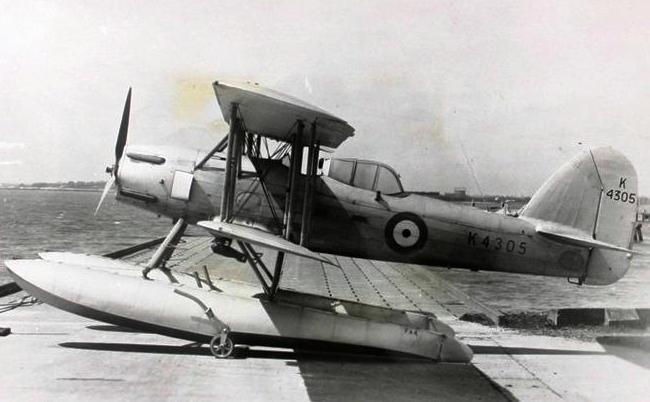
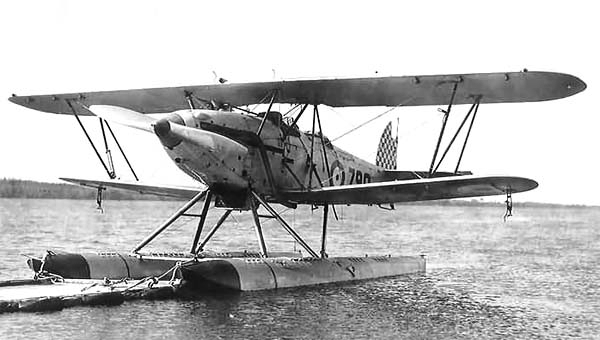
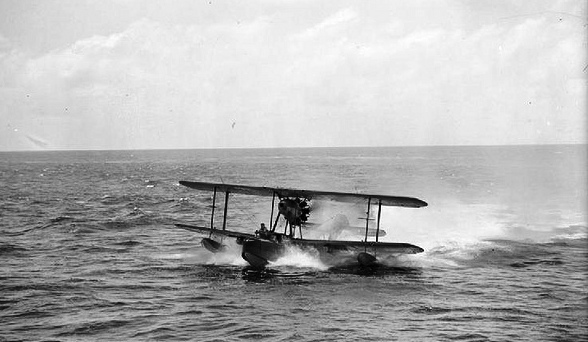
![]()
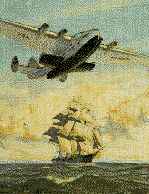 A direct result of Juan Trippe's
initiatives in creating Pan American World Airways, Darrell's
Island in Bermuda's Great Sound, once an internment camp for Boer War prisoners, was
selected as Bermuda's first seaplane airport. His
Pan American World Airways was ready to chart new Atlantic routes. He wanted the New York
to Bermuda and a Bermuda to Europe run, via the Azores. But he had problems acquiring
landing rights in the Azores and in Newfoundland, to link to his proposed Bermuda service.
Nor could he resolve the problem of
navigating over the Atlantic without radio direction finding. Frustrated, he turned to the
Far East, where there was less bureaucracy over landing rights, an easier navigational
system of staging posts - and the lure of Hawaii, Pacific islands and Philippines, on the
route to China.
A direct result of Juan Trippe's
initiatives in creating Pan American World Airways, Darrell's
Island in Bermuda's Great Sound, once an internment camp for Boer War prisoners, was
selected as Bermuda's first seaplane airport. His
Pan American World Airways was ready to chart new Atlantic routes. He wanted the New York
to Bermuda and a Bermuda to Europe run, via the Azores. But he had problems acquiring
landing rights in the Azores and in Newfoundland, to link to his proposed Bermuda service.
Nor could he resolve the problem of
navigating over the Atlantic without radio direction finding. Frustrated, he turned to the
Far East, where there was less bureaucracy over landing rights, an easier navigational
system of staging posts - and the lure of Hawaii, Pacific islands and Philippines, on the
route to China.
Juan Trippe had seen for himself, in visits by sea to Bermuda, how the British Furness Withy organization, to attract tourists on its New York to Bermuda ships, had built new hotels in Bermuda. He borrowed the idea for the Pacific and began construction of a chain of Bermuda style hotels for his many Pan American staging posts on the China Clipper route. Thus he started some unique tourism history of his own that Bermuda was later to copy (local records claim, inaccurately, that Bermuda was the forerunner of tourism). His flying boats scored outstanding successes because of their ability to fly long distances or to carry large payloads over short distances, and because the cost of constructing terminal facilities was appreciably lower than on land. Also, they had a better chance of surviving a forced landing on water. So they flourished at a time when, by and large, land based aircraft were not available with comparable payload and range performance. No commercial airline today would operate a four engine aircraft without stopping, across the Atlantic or Pacific with a payload of only 20 passengers, but Pan American World Airways did so very successfully then.
![]()
 In 1935 in Ottawa,
Canada, British civil aviation interests matched Trippe's initiatives. United Kingdom and
other major British Empire nations wanted air services to connect the Empire for joint
defence and better trade relations. They authorized service between Canada and Britain, a
Canadian transcontinental system, New York to Bermuda and further trans Atlantic flights
by British and American aircraft. It was the dawn of a new era for Bermuda. From the meeting in Ottawa came the
plans that made possible the firm idea of the creation of regular flying boat flights
between New York and Bermuda and points east by Imperial Airways and Pan American World
Airways - and the establishment of Trans Canada Air Lines, later Air Canada. The intention was to create for the
passenger traffic and mail conveyancing of the British Empire a carbon copy of what had
occurred in the United States. There, a network of small domestic air companies had been
knitted together to form a sophisticated air transport system. It included Western Air
Lines, United Air Lines, Eastern Air Lines and Northwest Air Lines.
In 1935 in Ottawa,
Canada, British civil aviation interests matched Trippe's initiatives. United Kingdom and
other major British Empire nations wanted air services to connect the Empire for joint
defence and better trade relations. They authorized service between Canada and Britain, a
Canadian transcontinental system, New York to Bermuda and further trans Atlantic flights
by British and American aircraft. It was the dawn of a new era for Bermuda. From the meeting in Ottawa came the
plans that made possible the firm idea of the creation of regular flying boat flights
between New York and Bermuda and points east by Imperial Airways and Pan American World
Airways - and the establishment of Trans Canada Air Lines, later Air Canada. The intention was to create for the
passenger traffic and mail conveyancing of the British Empire a carbon copy of what had
occurred in the United States. There, a network of small domestic air companies had been
knitted together to form a sophisticated air transport system. It included Western Air
Lines, United Air Lines, Eastern Air Lines and Northwest Air Lines.
The American air industry had commenced development of a fleet of new land airplanes, such as the Boeing 247 transport in 1933, the Douglas DC-1 and DC-2 and the first DC-3s. American carriers with their new planes were capable of snatching the bulk of traffic away from British interests, unless the British aircraft industry became aggressive. The problem was particularly acute in Canada, where tentacles of American carriers had penetrated significantly into Canadian cities close to the American border; and elsewhere, given the domination that Juan Trippe's Pan American World Airways had established with its overseas and over-water routes with Sikorksy flying boats.
Imperial Airways needed aircraft of similar caliber, not only to fly the Atlantic but also to meet its obligations in India and Australia imposed on it by the Imperial Government's Empire Air Mail scheme. With the huge bulk of mail this involved, Imperial Airways invited tenders from prominent aircraft manufacturers in Britain. Only one responded - Short Brothers - with the proposal for its Short Empire 'C' class flying boat. With no other options to pursue, Imperial accepted. Seldom in the history of commercial aviation was such a gamble taken on an untried and untested aircraft. Never in the field of human history since has such a gamble paid such handsome dividends. There was no time for normal extensive prototype development of the type that commercial aviation today requires and regulatory agencies demand. Forty-two Short Empire 'C' class British flying boats began coming off the production lines, at the rate of two a month - and were put into immediate service by Imperial Airways to India and Australia.
![]()
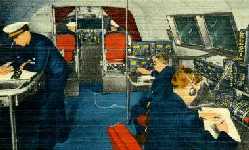
The late A. W. "Bill" Forbes, wireless engineer
This gentleman (who died when he was nearly 97 on August 31, 1996) first arrived in Bermuda by ship from Britain. He led a team of specialists from Cable & Wireless who began to pioneer in Bermuda for the Imperial Government a superior system and station for Air to Ground radio-direction finding for ships. In 1937, he led the team in both Air to Ground and Ship-to-Shore point-to point radio direction finding and telegraph services for aircraft. When, on May 6, 1936 the German Zeppelin Transport Company began its Hindenburg air ship from Berlin, Bermuda's Cable and Wireless station, particularly including Mr. Forbes, had day and night activity. Via radio telephone, its 36 staff guided aircraft, dirigibles and ships across the Atlantic. This was done with bearings, messages, weather conditions and more. They worked shifts around the clock, in a constant atmosphere of clicking machines, hum and distinctive odor of electrical equipment, signal buzzes and voices calling from the air and sea via loudspeakers. They handled often chronic daily emergencies at sea or in the air near or far beyond Bermuda. They had to breakfast, lunch or dine on eggs, bacon and toast cooked up on a hot plate at work for many days at a time, with makeshift meals interrupted by emergencies.
![]()
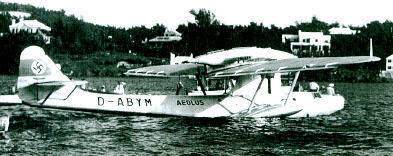 Germany's
efforts in the North Atlantic attracted huge interest. The program was
administered by Freiherr von Buddenbrock who was Atlantic Air Transport Director
of Deutsche Luft Hansa. He went to the USA on the first flight and returned on
the last. When Luft Hansa -
Lufthansa - founded in 1926 began in services from Germany to Brazil in 1936, it used five
models of the Dornier Do 18 on its service from Berlin to Lisbon to the
Azores to Bermuda to New York, USA, periodically when weather conditions
required, also from New York to Sydney, Nova Scotia, from there to the Azores
and Lisbon. They were improvements on the
Dornier Wal (Whale) flying boats. The only snag was that they could not use
Ireland - the Irish had barred them from using Galway Bay, the only suitable
place in Ireland. The crews of the two flying boats Aeolus (see
left photo, in Bermuda) and Zephyr that visited Bermuda included
Flugkapitans Blankenburg, von Engel, Graf Schack, Mayr, von Captain Baron F. W.
Buddenbrock and Direktor Freiherr von Gablenz; wireless operators Stein and
Ehlberg; flying engineer Gruschwitz and engineer Eger. The flying boats had an
astonishingly good safely record. Except for a leaking radiator on the first
departure there was no trouble of any sort and no replacements in either the
flying boats or their Junkers Jumo heavy-oil motors. Lufthansa stationed the depot
(catapult) ship Schwabenland (a
converted cargo ship) west of the Azores.
The most famous of
the aircraft of the Ha
139 was the Nordwind - shown here - in Deutsche Luft Hansa livery of about
1938.
Germany's
efforts in the North Atlantic attracted huge interest. The program was
administered by Freiherr von Buddenbrock who was Atlantic Air Transport Director
of Deutsche Luft Hansa. He went to the USA on the first flight and returned on
the last. When Luft Hansa -
Lufthansa - founded in 1926 began in services from Germany to Brazil in 1936, it used five
models of the Dornier Do 18 on its service from Berlin to Lisbon to the
Azores to Bermuda to New York, USA, periodically when weather conditions
required, also from New York to Sydney, Nova Scotia, from there to the Azores
and Lisbon. They were improvements on the
Dornier Wal (Whale) flying boats. The only snag was that they could not use
Ireland - the Irish had barred them from using Galway Bay, the only suitable
place in Ireland. The crews of the two flying boats Aeolus (see
left photo, in Bermuda) and Zephyr that visited Bermuda included
Flugkapitans Blankenburg, von Engel, Graf Schack, Mayr, von Captain Baron F. W.
Buddenbrock and Direktor Freiherr von Gablenz; wireless operators Stein and
Ehlberg; flying engineer Gruschwitz and engineer Eger. The flying boats had an
astonishingly good safely record. Except for a leaking radiator on the first
departure there was no trouble of any sort and no replacements in either the
flying boats or their Junkers Jumo heavy-oil motors. Lufthansa stationed the depot
(catapult) ship Schwabenland (a
converted cargo ship) west of the Azores.
The most famous of
the aircraft of the Ha
139 was the Nordwind - shown here - in Deutsche Luft Hansa livery of about
1938.
 On September 11, 1936 the
aircraft began arriving in Bermuda, complete with their Nazi insignia. The first arrival
was Captain Baron F. W. von Buddenbrock. There were four more visits to Bermuda by various German float
planes including several by the Ha 139 made by Boem und Voss of both aircraft and
battleship fame. They flew into Bermuda to get more fuel. They landed in Hamilton Harbor. Engines were four
600 hp Junkers Jumo
205C 12-cylinder diesels. Span was 88 feet 7 inches (27m). Length was 63 feet 11.75
inches (19.5 meters). Wing area was 1,259.38 square feet (117 square
meters). Catapult take off weights were 38,581 pounds (17,500 kilograms).
Maximum speed
was 196 miles per hour (315 kilometers per hour) at sea level. Operational ceiling was
11,480 feet (3,500 meters). Maximum range was 3,395 miles (5,300 kilometers).
They continued until the war ( 1939 to 1945). Unlike the flying boats it
serviced which were trouble-free, the crew of the Shabenland had an arduous
time. No other catapult ship could be spared for the German North Atlantic
experiments so the Schwabenland had to steam across the Atlantic after each
double-launch in order to start the flying boats on their next trips. In each
case, the aircraft landed alongside and were then
winched up or down for fuel or repair, or caterpult take-off from the ship,
as the larger photos below show.
On September 11, 1936 the
aircraft began arriving in Bermuda, complete with their Nazi insignia. The first arrival
was Captain Baron F. W. von Buddenbrock. There were four more visits to Bermuda by various German float
planes including several by the Ha 139 made by Boem und Voss of both aircraft and
battleship fame. They flew into Bermuda to get more fuel. They landed in Hamilton Harbor. Engines were four
600 hp Junkers Jumo
205C 12-cylinder diesels. Span was 88 feet 7 inches (27m). Length was 63 feet 11.75
inches (19.5 meters). Wing area was 1,259.38 square feet (117 square
meters). Catapult take off weights were 38,581 pounds (17,500 kilograms).
Maximum speed
was 196 miles per hour (315 kilometers per hour) at sea level. Operational ceiling was
11,480 feet (3,500 meters). Maximum range was 3,395 miles (5,300 kilometers).
They continued until the war ( 1939 to 1945). Unlike the flying boats it
serviced which were trouble-free, the crew of the Shabenland had an arduous
time. No other catapult ship could be spared for the German North Atlantic
experiments so the Schwabenland had to steam across the Atlantic after each
double-launch in order to start the flying boats on their next trips. In each
case, the aircraft landed alongside and were then
winched up or down for fuel or repair, or caterpult take-off from the ship,
as the larger photos below show.
Lufthansa in Bermuda, 1936. All five above original photos were taken by the late "Bill" Forbes in Bermuda. Copyright by one of his sons this author, Keith Forbes. Provided here with permission exclusively and solely for this unique History of Aviation in Bermuda website.
![]()
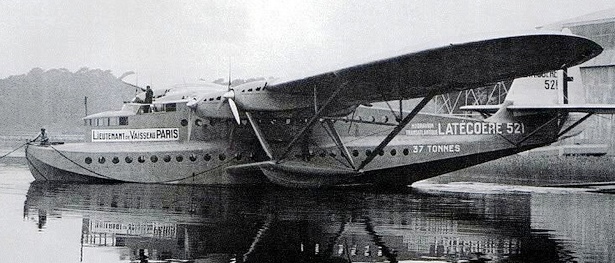
Photo courtesy Latecoere archives 1995
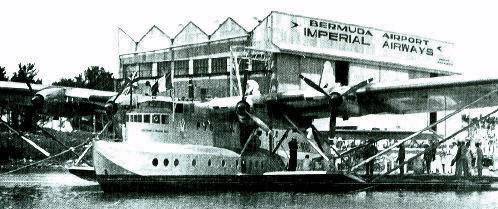
Air France - Transatlantique's - later, Air France - Latecoere 521 F-NORD "Lieutenant de Vaisseau Paris" made 2 visits to Bermuda when flying from Paris on surveys. Here, she is seen at the brand-new Bermuda airport on Darrell's Island. Air France omits any mention of this in its own archives.
![]()
On that day, Bill Forbes boarded the Royal Navy warship HMS Dragon at HM Dockyard in Bermuda. She left port next day to circumnavigate Bermuda completely, for a very special purpose. As a radio direction finding engineer, Forbes's task for the Imperial Government was to calculate and log radio direction finding calibrations by sea for ships and aircraft approaching Bermuda, having already done so by land radio direction finding. This very successful special project removed from Bermuda all remaining navigational obstacles for ships and flying boats at sea to find Bermuda and safely navigate its dangerous and extensive ring of outer coral reefs. From February 20, Forbes and his team followed this up by beginning and finishing their design, at Bermuda's highest point, The Peak in Smith's Parish, of what became the Eagle's Nest - the world's first Adcock short wave radio direction finding station, specifically for pilots and navigators of Imperial Airways and Pan American World Airways flying boats and other aircraft to home in to the signal. It was another 'first' for Bermuda in aviation support technology.
These initiatives established the navigational systems that were used in all weather conditions to safely guide ships and flying boats right into Bermuda. They made Bermuda attractive to Imperial Airways and Pan American. They put Bermuda firmly for the first time into mainstream winter and summer tourism for visitors by air from around the globe.
![]()
The German dirigible was promoted as the future of trans-Atlantic flight, but instead it became the notorious poster child of air disasters. As the hydrogen-filled blimp was landing in Lakehurst, it suddenly burst into flames and crashed in front of shocked bystanders, killing 35 of the 100 passengers and crew on board - and putting an end to the short-lived air travel program. The airship had crossed the Atlantic safely twenty times before but it became the effective end of airship technology having the edge over winged aircraft. One result of this was the decision of Imperial Airways and Pan American World Airways to put forward their plans to fly a shorter distance over the Atlantic, specifically to Bermuda.
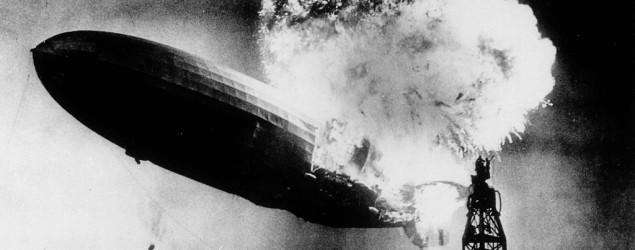
Hindenburg air disaster
![]()
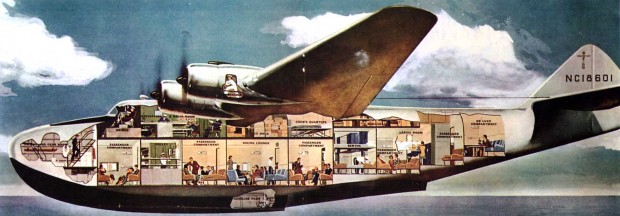
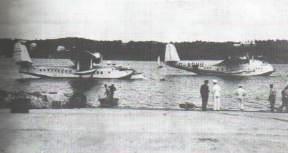
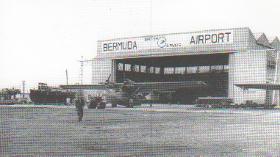
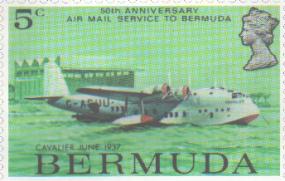
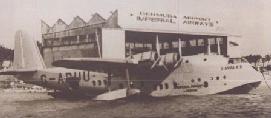
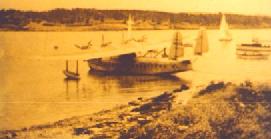
Thus was the scene set for Imperial Airways (see http://www.britishairways.com/travel/explore-our-past/) and Pan American World Airways to establish their flying boat services between New York and Bermuda. Bill Forbes and his team readied their radio direction finding equipment, working through the night. On Darrell's Island, a team worked to re-assemble and then check the Imperial Airways' Short Empire C-class RMA Cavalier flying-boat G-ADUU, shipped in parts from England, under the supervision of Imperial's Chief Engineer Len Turnhill, working with Imperial Airways and Bermudian staff.
The next day, the flying boat started engines, cruised on pontoons through Hamilton Harbor and soared into mid Atlantic airspace for its first Western Hemisphere flight, to test and calibrate its on board radio equipment and match its signals with those transmitted by Forbes and his team on the Adcock short wave radio direction finding equipment. Then came May 25, 1937. It was a proud day for Bermuda. The Imperial Airways' Short Empire C class flying boat RMA Cavalier took off from the unofficially opened and not quite finished Darrell's Island Marine Air Terminal, for New York. She was commanded by Capt. Neville Cumming, with co-pilot First Officer Neil Richardson, radio engineer Patrick Chapman, and steward Robert Spence.
At the same time, the Pan American Airways' Sikorsky S-42, NC 16735, by then renamed by Mrs. Trippe as Bermuda Clipper, also flew from Port Washington, NY to Bermuda. She did a successful reciprocal survey of the route. (Especially noteworthy and quote worthy is the fact that this was two years before Pan Am started its New York to London service.) Bermuda Clipper was commanded by Capt. R. O. D. Sullivan. Passengers included Mr. John Barritt of John Barritt & Son Mineral Water Company; Major Neville, a staff officer at Admiralty House; Mr. E. P. T. Tucker, General Manager of John S. Darrell & Co.
Also aboard were Mr. E. R. Williams of J. E. Lightbourn & Co. ( later, Mayor of Hamilton); Mr. H. B. L. Wilkinson, of Bailey's Bay; Miss Minna Smith, a nurse at King Edward VII Memorial Hospital; Mr. Terry Mowbray, Sports Director of the Bermuda Trade Development Board. Mr. & Mrs. Richard Scott of Boston were returning from their honeymoon in Bermuda; and Mr. Eugene Kelly, Mrs. Alice James and Mrs. John Fullarton, all of New York.
Later, in support of the two airlines and expecting more communications traffic, the West India and Panama Telegraph Company Ltd - in conjunction with Britain's Imperial & International Communications - installed an internal teleprinter system between the airlines' offices and the Air to Ground station.
![]()
Bermuda's first seaplane port, on Darrell's Island, before which there was no such facility. Owned by the Bermuda Government, it enabled Bermuda to become known as THE mid Atlantic seaplane and flying boat airport base and resort. It was the date of the inaugural passenger and airmail flights of the Cavalier and Bermuda Clipper. Both flying boats took off from Port Washington, New York and landed safely.
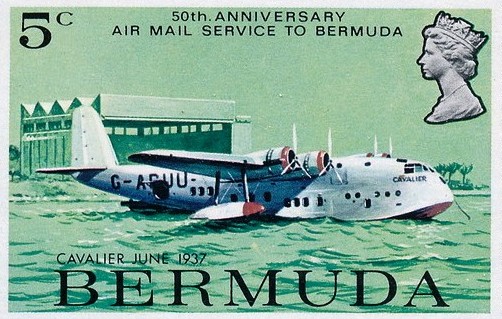
Bermuda postage stamp (of later vintage) commemorated this June 1937 event
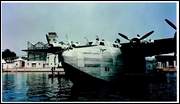

![]()
On its southerly route, its stops were at Bermuda, Azores, Lisbon, Marseilles and Southampton, England.
![]()
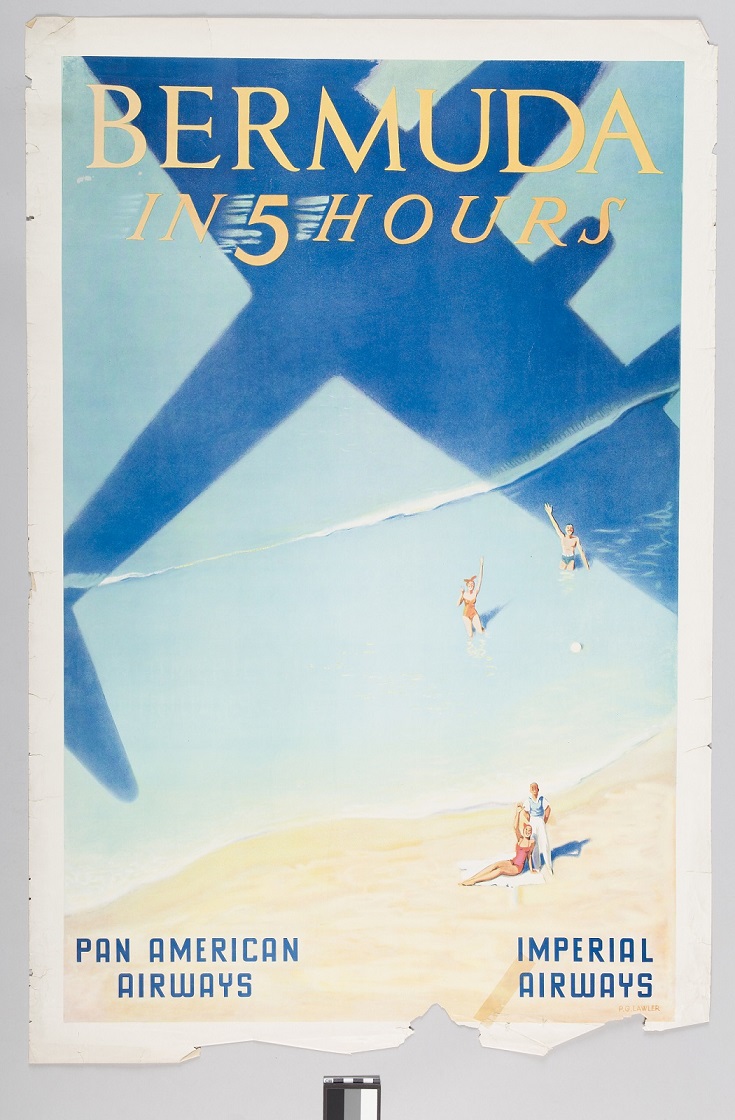
![]()
It was because New York weather caused problems for flying boats. At Baltimore, 30,000 people welcomed the flying boats "Bermuda Clipper and "Cavalier." Flying time to Bermuda for Bermuda Clipper, with 28 passengers, was 6 hours 25 minutes, with 5 hours 45 minutes for "Cavalier" with 17 passengers.
![]()
![]()
This Empire S-23 of Imperial Airways had become a firm favorite in Bermuda. Crashed between New York and Bermuda. Three died, ten survived after being rescued by tanker vessel "Esso Baytown." There is a plaque in tribute to the heroes and survivors at the Bermuda Anglican Cathedral.
![]()
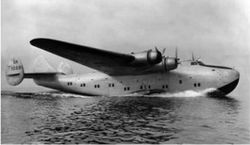 The Boeing 314
"Clipper" initially replaced the S-42 on the PA
160/161 New York service and then to the UK, Far East and Bermuda. See the book Last of the Flying Clippers. The
Boeing 314 Story. M. D. Klass. 2006. With
amenities modeled on those of the great luxury liners of the period, the 12
Boeing-314 Clippers operated by Pan Am and the three diverted to the British Overseas Airlines Corporation
under the Lend-Lease Act remain the most luxurious aircraft ever to take to the skies. The sumptuous
long-range flying boats produced by the Boeing Airplane Company, which used to fly through Bermuda in the 1930s and '40s, are
highlighted here. The lavishly illustrated book includes sections on the
aircraft's extensive use of the Darrell's Island airport in Bermuda. They were
the largest aircraft of their type ever built, with a maximum of 74 passengers
and 10 crew. They used island airports such as the one then in Bermuda as
intermediate stepping stones for ocean-spanning flights across the Atlantic and
Pacific. The aircraft were commissioned from Boeing by Pan Am founder Juan
Trippe – also the developer of Bermuda's Castle Harbour Hotel – specifically
for trans-oceanic flights. PanAm operated nine of the aircraft while three were
purchased by Imperial Airways, forerunner of today's British Airways and also
flew through Bermuda en route to New York and other destinations. The aircraft
were built between 1938 and 1941. 84,000 pounds, four-engined, they were 106
feet long, had a wing span of 152 feet and had a top speed of 199 miles per
hour. They used the massive wings of Boeing's earlier XB-15 bomber prototype to
achieve their enormous range. After World War Two, seaplanes became obsolete because new, long-range
aircraft such as the Lockheed Constellation could cross the Atlantic and Pacific
non-stop.
The Boeing 314
"Clipper" initially replaced the S-42 on the PA
160/161 New York service and then to the UK, Far East and Bermuda. See the book Last of the Flying Clippers. The
Boeing 314 Story. M. D. Klass. 2006. With
amenities modeled on those of the great luxury liners of the period, the 12
Boeing-314 Clippers operated by Pan Am and the three diverted to the British Overseas Airlines Corporation
under the Lend-Lease Act remain the most luxurious aircraft ever to take to the skies. The sumptuous
long-range flying boats produced by the Boeing Airplane Company, which used to fly through Bermuda in the 1930s and '40s, are
highlighted here. The lavishly illustrated book includes sections on the
aircraft's extensive use of the Darrell's Island airport in Bermuda. They were
the largest aircraft of their type ever built, with a maximum of 74 passengers
and 10 crew. They used island airports such as the one then in Bermuda as
intermediate stepping stones for ocean-spanning flights across the Atlantic and
Pacific. The aircraft were commissioned from Boeing by Pan Am founder Juan
Trippe – also the developer of Bermuda's Castle Harbour Hotel – specifically
for trans-oceanic flights. PanAm operated nine of the aircraft while three were
purchased by Imperial Airways, forerunner of today's British Airways and also
flew through Bermuda en route to New York and other destinations. The aircraft
were built between 1938 and 1941. 84,000 pounds, four-engined, they were 106
feet long, had a wing span of 152 feet and had a top speed of 199 miles per
hour. They used the massive wings of Boeing's earlier XB-15 bomber prototype to
achieve their enormous range. After World War Two, seaplanes became obsolete because new, long-range
aircraft such as the Lockheed Constellation could cross the Atlantic and Pacific
non-stop.
![]()
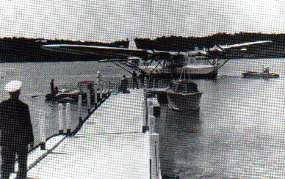
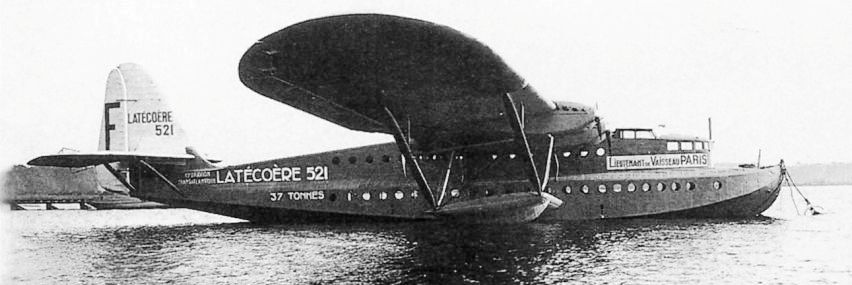
Photo courtesy Latecoere archives 1995
They definitely arrived not just once but in May, June and August 1939, after a very successful survey flight in 1936, although these Bermuda flights are not mentioned in Air France history. They were two giant 43 ton 6-engined Air France Latecoere 521/522, aircraft of Air France-Transatlantique, the early name for Air France. They were Lieutenant de Vaisseau Paris (F-NORD), with the same name as that of the French aircraft that had visited Bermuda earlier and Ville de Saint Pierre. They were easily the largest aircraft ever seen in Bermuda up to that time. They were powered by six 671kW Hispano-Suiza 12Y37 engines and first appeared in April 1937. They were planned and were proving flights for a regular trans-Atlantic service but World War II prevented this. Both aircraftwere impressed into French Navy service on 1 September 1939. These were armed with five 7.5mm Darne machine-guns and carried up to 1,200kg of bombs. But they perished during the war.
![]()
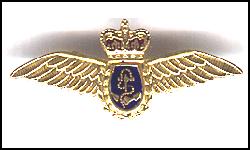
 With the
outbreak of World War 2 for Britain, more Fleet Air Arm of the Royal Navy and
Royal Air Force
(RAF) aircraft were sent to Bermuda and were based at both Darrell's Island
and Boaz Island.
With the
outbreak of World War 2 for Britain, more Fleet Air Arm of the Royal Navy and
Royal Air Force
(RAF) aircraft were sent to Bermuda and were based at both Darrell's Island
and Boaz Island.
The anomaly in the command structure referred to in 1933 was rectified when this part of the Royal Navy Dockyard was transferred to the FAA and given the name of HMS Malabar.
Losses galore of British and bought from USA military aircraft began to occur in and around Bermuda from 1941 to the end of the war.
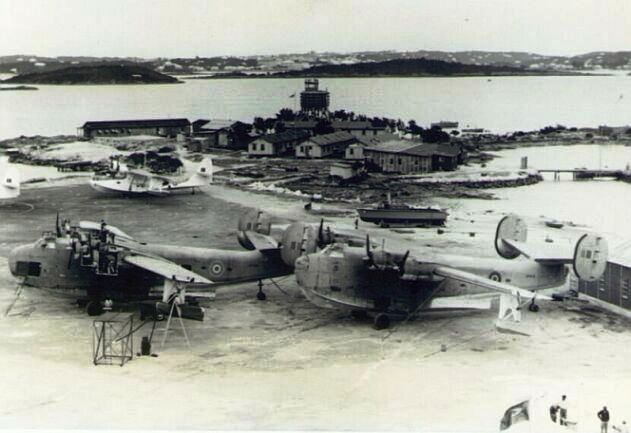
RAF at Darrell's Island in WW2
![]()
As part of the preparations for World War 2, the increased workload at HMS Malabar caused problems due to the limited space available. With so many of the locally-based or in-transit Royal Navy warships carrying catapult-launched seaplanes such as the Hawker Osprey, Fairey Seafox and Supermarine Walrus seaplanes, the need for prompt, efficient and spacious aircraft maintenance was a high priority. Thus, the new station was built. It had two good-size hangers and launching ramps on either side of the island and they allowed continuous operation in any wind direction. With the Battle of the Atlantic over, the station was reduced to care and maintenance status in 1944. Some remnants still survive.
![]()
They included Norman Sumpter, Harold Dale, Richards (first name unknown), Squires (first name unknown), Arthur (Copper) Jenkins, Charles Nunn, Robert Oatway, Fred (Red) Adderley, David Kopec, Herbert (Chummy) Zuill, Norman Jones, John Hartley Watlington and Hugh Watlington.
![]()
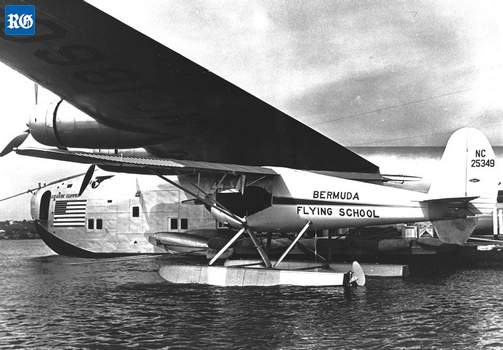 It began
with the goal of training pilots for the Royal Air Force (RAF) or the Royal
Navy's (RN) Fleet Air Arm (FAA). The school trained volunteers from the
local territorial units using Luscombe seaplanes (see photo) paid for by an
American resident of Bermuda, Mr Bertram Work, and a Canadian, Mr Duncan
MacMartin. Those who passed their training were sent to the UK's Air Ministry to
be assigned, as promised, to the Royal Air Force (RAF) or the Royal Navy's Fleet
Air Arm (FAA).
It began
with the goal of training pilots for the Royal Air Force (RAF) or the Royal
Navy's (RN) Fleet Air Arm (FAA). The school trained volunteers from the
local territorial units using Luscombe seaplanes (see photo) paid for by an
American resident of Bermuda, Mr Bertram Work, and a Canadian, Mr Duncan
MacMartin. Those who passed their training were sent to the UK's Air Ministry to
be assigned, as promised, to the Royal Air Force (RAF) or the Royal Navy's Fleet
Air Arm (FAA).
The Commanding Officer of the school was Major Cecil Montgomery Moore, DFC, earlier the senior officer of the Bermuda Volunteer Rifle Corps, who had gone to the UK to serve as a fighter pilot during the First World War and who was also the commander of the Bermuda Volunteer Engineers. The chief flying instructor was an American, Captain Ed Stafford. The first class, of eighteen students, was in training by May 1940. On 4 June, Fenton Trimingham became the first student to solo. Ten Bermudian companies agreed in June 1940, to defray the expenses of ten of the students. They were the Bank of Bermuda, the Bank of N.T. Butterfield, Trimingham Bros., H.A. & E. Smith, Gosling Bros., Pearman Watlington & Company, the Bermuda Electric Light Company (BELCO), Bermuda Fire & Marine Insurance Company, the Bermuda Telephone Company (TELCO), and Edmund Gibbons.
The school trained eighty pilots before an excess of trained pilots led to its closure in 1942. The body administrating it was adapted to become a recruiting organisation for the Royal Canadian Air Force (RCAF), sending two-hundred aircrew candidates to that service before the war's end. The BFS only accepted applicants who were already serving in one of the part-time units, which had been mobilized for the duration of the war. Successful students were released from their units and allowed to proceed overseas. With the moratorium against sending drafts overseas, this meant local soldiers came to see the BFS as the easiest way of reaching sharper ends of the war. The BFS was included in the Empire Air Training Scheme for British Commonwealth pilots. Its graduates included eight Americans, who had volunteered for the RAF in the USA, and had then been sent to the BFS for training. Photo above right: Bermuda Flying School Luscombe parked next to a PAA aircraft.
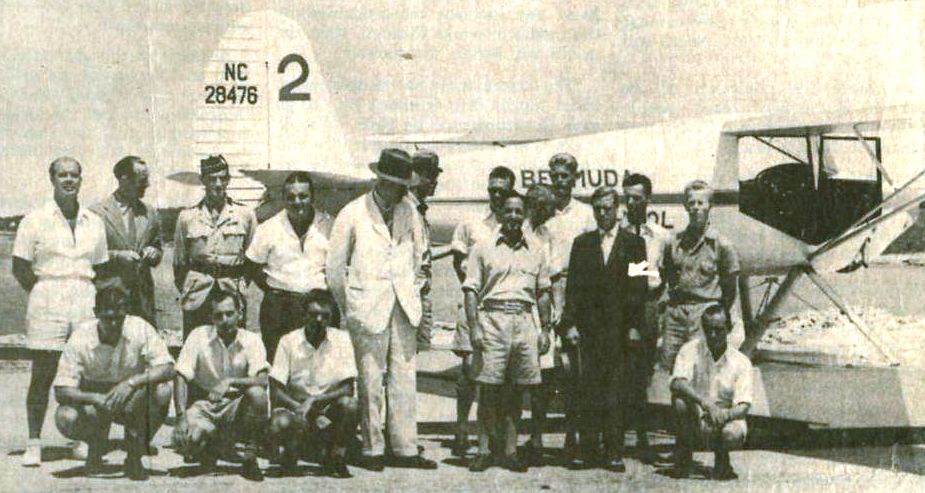
Photo shows then-Duke of Windsor, third from right, in dark suit, formerly King Edward VIII, in Bermuda before he was sent as Governor of the Bahamas, inspecting the new Bermuda Flying School
![]()
They were graduates of the Bermuda Flying School which had been set up by the Royal Air Force then with a base in Bermuda. Some were bound for the UK's Royal Air Force. They left on the New Zealand Shipping Line mostly cargo vessel SS Mataroa. Others went to Canada, for service with the Royal Canadian Air Force (RCAF). They included
Other Bermudians too joined the RAF, as graduates of the Bermuda Flying School.
Those who went to Canada and joined the Royal Canadian Air Force included
Others, who joined separately included Martin Smith, later a Bermuda barrister, who did not graduate from the Bermuda Flying School but instead joined up while he was in the UK (See Bermuda Mid Ocean News article 25th March 1972).
![]()
A first for Bermuda, part of the construction from scratch of the US Military facilities in Bermuda - mostly US Army and US Army Air Force at St. David's and in St. George's and paid for 100% by American taxpayers. At the same time as simultaneous construction of the US Navy base in Southampton, ships and aircraft of the US Navy began to be based in Bermuda. Losses galore of US military aircraft began to occur in and around Bermuda from then to the end of the war.
![]()
The Brewster Bermuda was the name given by the RAF to the Brewster SB2A (below). In the US Navy service, the aircraft was the SB2A "Buccaneer." The Bermuda was not carrier-capable, although it was designed as a dive bomber.
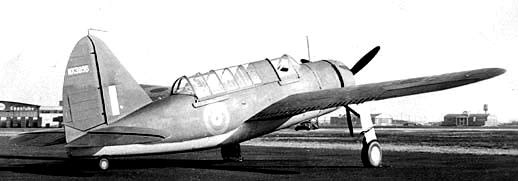
Brewster Bermuda
![]()
Sunk in Great Sound when training local defenses.
![]()
Made in the USA in huge numbers. Acquired by the Royal Air Force After being ferried from Bermuda, it was destroyed in a bombing raid at Greenock and sank.
![]()
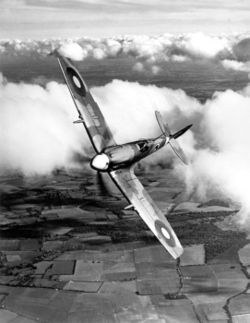
Mark IIb P8507 was bought for the Royal Air Force by Bermudians, by public appeal. It shot down five German aircraft before it failed to return on this date. Photo supplied to this author of Bermuda Online in 1986 from Royal Air Force records.
![]()
They were using Supermarine Walrus flying boats flown by naval pilots from ships at the dockyard, or pilots from the Royal Air Force and the Bermuda Flying School on Darrell´s Island. However, once the US Navy began flying air patrols from Darrell´s Island from September, the Fleet Air Arm´s patrols ceased.
![]()
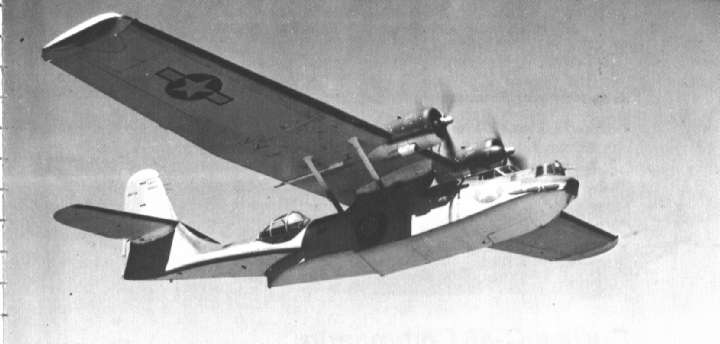
United States Navy. Hit tent on Darrell's Island after missed approach.
![]()
Capsized on landing at Grassy Bay - but recovered.
![]()
It was not an American military plane but a British one. A Royal Air Force (RAF) B-24 Liberator landed on December 20, 1941 from Dorval, near Montreal in Canada. Almost immediately thereafter, Kindley Field became a transit stop for frequent shuttle RAF shuttle flights between Bermuda and the important Royal Air Force and Royal Canadian Air Force base established at Dorval.
![]()
After being licensed to fly in on September 11th, 1941, they departed Bermuda in January 1942 aboard the former passenger liner and now armed merchant cruiser " Queen of Bermuda". They included Lyall Mayor, Colyn L. Rees (born Spanish Point, Bermuda, November 25, 1922), Eddie Whitecross and John Pitt. They went to initially to Halifax, Nova Scotia for an overnight stay on their way to England. On departing Halifax, the ship went onto a reef during snow storm outside of Halifax harbour. Eventually, they arrived in England to join the RAF. Some had very interesting stories, with their aviation careers taking them all over the world.
![]()
Sank in Hamilton Harbour, later retrieved.
![]()
But did not fly it until 1946.
![]()
On board were a number of Bermudians bound for the Royal Canadian Air Force. They included Norman Sumpter, Harold Dale, Richards (first name unknown), Squires (first name unknown), Arthur (Copper) Jenkins, Charles Nunn, Robert Oatway, Fred (Red) Adderley, David Kopec, Herbert (Chummy) Zuill and Norman Jones. It was a 10-hour flight.
![]()
Sank during Bermuda storm but later retrieved.
![]()
Aircraft retrieved by freighter 100 miles off Bermuda and taken to San Juan.
![]()
HMS Newcastle, a Royal Navy ship damaged by a torpedo from a German submarine, slowly entered Bermuda under her own steam, en route to the Boston Navy Yard for substantial repairs. While in Bermuda and based at the Dockyard, she carried several Supermarine Walrus flying boats, one of which was launched on a training run. But the aircraft crashed into the sea of Daniel's Head and the rear gunner was killed.
![]()
It was based at the United States Naval Operating Base (NOB) at Southampton, as a German submarine hunter. It attempted a pass over the target area on the Great Sound and unexpectedly dove into the water at a high rate of speed near Grace Island. The entire eight-man crew was killed in the first-ever deadly air crash in Bermuda.
![]()
Fifty percent of the squadron's assets, flight crews and ground support staff were supplemented by VP-52. During the four months of training detachments were sent to Kindley Field, Bermuda, for operational long-range training flights.
![]()
Of Hamilton, Bermuda, and serving in the RCAF, he was reported missing on operations overseas in the Toronto Globe & Mail on this day and was subsequently reported as officially presumed dead in that same newspaper on 4 April 1944. Hiis Mustang fighter AG 641 of 400 Squadron RCAF was shot down near Dieppe on 22 June 1943. It took him more than a year to escape from France and return home, which he did on 10 July 1944. He authored an account of his adventures published in the Bermuda Historical Quarterly in 1949.
![]()
32041 (ex USAAF B-24D 42-40440, VB-105) crashed at sea, in Castle Harbour, at the end of the military base runway, after takeoff Bermuda. 11 Crew killed.
![]()
Will Mitchell Haire was at the US Naval Operating Base in Bermuda. His plane was one of the nine aircraft of Squadron VP 207 (VP for a long range regular Patrol squadron, compared to VS for a Scouting squadron), crashed 25 miles north of Bermuda. All eight crew members were missing, presumed killed. The squadron had been in Bermuda for only three months, since June. It had replaced VP 201 which had served in Bermuda from September 1943 to June 1944. The rest of Haire's squadron remained in Bermuda until June 1945.
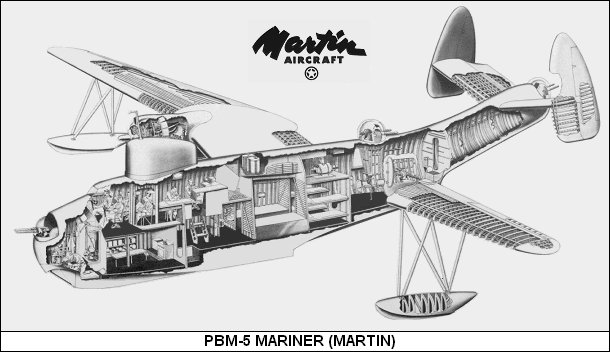
![]()
Bermudians, they went to Buckingham Palace in London to receive the Distinguished Flying Cross and Distinguished Flying Medal respectively, for bravery in battle, from King George VI. They were flying Wellington bombers. They were accompanied by Mrs. Peggy Wingood, wife of Allan Wingood, and their baby daughter Katherine.
![]()
1945. February. A B-24 bomber flown by the USAAF crashed into the sea moments after take-off from Bermuda
The B-24 plummeted into Castle Harbour moments after it took off from the airport, then Kindley Field, with the loss of five of its nine-strong crew. Accounts indicated that a salvage effort was conducted shortly after the initial crash.
![]()
The two lighter-than-air aircraft were moored at the north east end of the field under the supervision of Naval Operating Base Bermuda personnel. Guards were supplied by Kindley during the mooring to keep all curious personnel off the airfield, with a roving patrol established during their stay. The two mooring posts were elected by Post Engineers BBC early in the month when warning of their arrival was received. Because of the approximation of 30 hours made for en route time to Lagens, the crew needed a 48-hour forecast of weather conditions. A 24-hour forecast map, and a running map combining the two,. were drawn up by the Weather Station with winds for the surface, 1,000 feet and 3,000 feet noted; although with the gas load on board it was known that the blimps could not fly over 1,000 feet. The schedule was for 26 hours and 48 minutes in flight time. At 1:30 am on April 29, the craft departed for Lagens, arriving there just 2 hours and 51 minutes behind the set schedule timing.
![]()
The first flight was by G-AGBZ RMA Bristol.
![]()
Captured in Munich by the US Army Air Force and re-equipped with new engines and American radios, it flew to Patterson Field in Ohio via Orly, Lajes and Bermuda.
![]()
It was established on that part of the US military base once reserved for and used by Britain's Royal Air Force. The senior RAF officer in Bermuda, during the War, Wing Commander E. M. "Mo" Ware, OBE, DFC, RAF, was loaned to the civil government to oversee the conversion of the RAF's end of the military airfield into a Civil Air Terminal. Pre-fabricated buildings were relocated from Darrell's Island to assemble the first terminal.
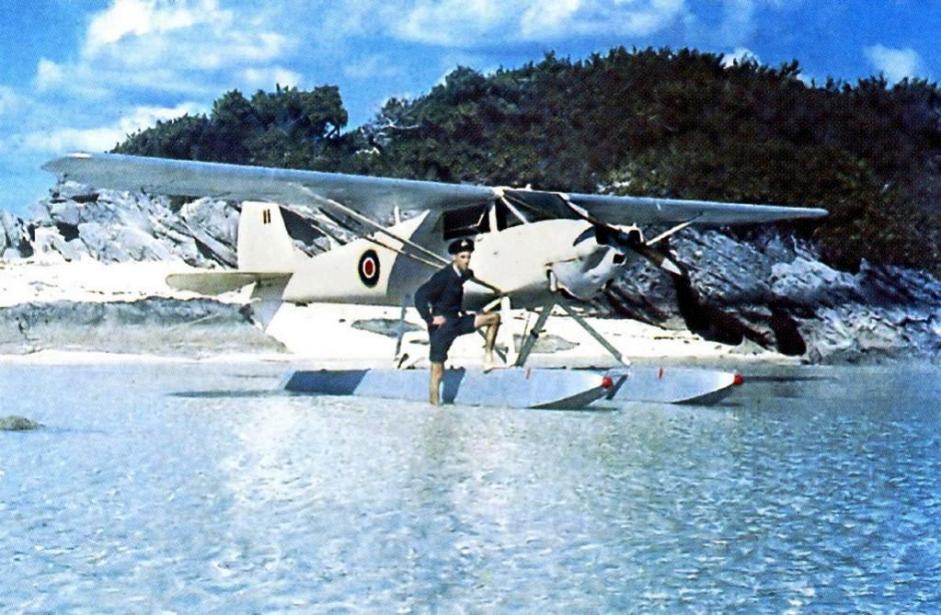
Wing Commander Ware in a then-requisitioned aircraft, a Luscombe in Royal Air Force livery
Ware remained with the local government after leaving the RAF, becoming the Director of Civil Aviation for many years. He was married to Sylvia, who in the 1960s worked with the Visitors Service Bureau at the airport. They have a son living in Bermuda, two daughters, Sylvia, understood to be living in England, and Maureen, a vet in Bermuda. Although no longer maintaining any detachment in Bermuda, the RAF continued to use Island as a trans-Atlantic staging after WW2 While most foreign military aircraft passing through the Island had used the US military end of the airfield, the RAF continued to disperse its aircraft at the former RAF end of the field. Large detachments of tactical aircraft, accompanied by larger refueling, transport, and maritime patrol aircraft, regularly staged at the island on transits between the UK and the garrison at Belize, etc.
![]()
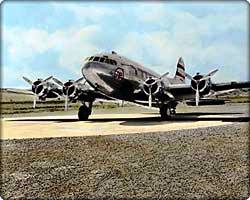
Photo courtesy Boeing Archives
The Boeing Stratoliner S-307 "Flying Cloud" - see photo above -was built in 1940. She was the first to fly as high as 20,000 feet. Only 10 were built. She carried 5 crew and 33 passengers, later re-configured for 45 passengers at an average speed of 187 mph. After flying routes in Texas, California and Mexico for Pan Am, she was taken over from December 1941 by the US Army Air Force and put to work in South America. After WW2, she was returned to Pan Am which flew it on the New York to Bermuda run for a short time in January 1946 until she was sold. She was later moth-balled at Tucson, Arizona, for years. She still survives, despite a crash-landing near Seattle in April 2002. She is now owned and has been restored by the Smithsonian.
![]()
Delegates from the United States and the United Kingdom met at Hamilton,
Bermuda, to resolve issues remaining from the 1944 Chicago meeting. Senior officials of
Britain's Ministry of Aviation and the United States Civil Aviation met to agree on British and American
airline routes across the Atlantic and into each country's territories. It
was a 27-day conference, to agree on British and American
airline routes across the Atlantic and into each country's territories.
It was the first of what became later several subsequent aviation
agreements to which Bermuda lent her name. The principal American
delegate at that Bermuda Conference was Fiorello LaGuardia, the
energetic and colorful Mayor of New York, who had been involved in
several other important conferences relating to air travel held
previously; and had been a guest of the American
military base at Fort Bell/Kindley, at the VIP quarters. The
earlier Chicago meeting which had involved some 52 countries had been unable to
reach agreement on any but the most fundamental points at issue in post-war
international civil air transport. It had agreed the first two Freedoms of civil
air transport
Second
Freedom: The right to land for essential repairs, refuelling or to escape
adverse weather conditions in another country.
Third Freedom: The right to collect passengers or cargo in an airline's home country for flight to another country.
Fourth Freedom: The right to discharge
passengers or cargo at another country's airport. Fifth freedom: The right to
collect passengers or cargo at a location outside its home country and fly them
to a point father on, also outside the airline's home country.
It
was clear to aviation planners in both countries that there would be
considerable post-war development of civilian air traffic across the Atlantic.
Rapid wartime development of civil aircraft especially landplanes such as the
Douglas DC4 and DC6 the Boeing Stratocruiser and Lockheed Constellation meant
that future routes between the two countries would use runways, many developed
during the war as refuelling points for USAAF Boeing Fortresses on delivery runs
to operational bases in England and North Africa. The new airliners could carry
substantially greater payloads than the flying boats, allowing for both more
passengers and greater fuel loads providing longer range. But no civil transport
aircraft at that time could fly the Atlantic without refuelling.
The
American delegates were in favour of a very liberal regime under which several
airlines could provide as much capacity as they wished on each designated route,
charge what fares they considered commercially justified and operate with as
little government interference as possible. The British were conscious that the
US had a significant lead in the development of civil aircraft, that it already
had a substantial internal air travel market and that its airlines dominated
traffic within South America and between South and North America.
The
eventual agreement permitted each country to specify as many carriers as it
wished on a series of designated routes. In the event the British restricted
their allocation to BOAC whilst the Americans allowed three carriers to compete,
Pan American, American Export and Trans World. Fares were to be agreed by an
international body and there would be a procedure to investigate them if either
country thought that they were too low to be commercially viable.
Members
of both the United States Senate and the House of Lords criticized the
negotiators. Both sides were concerned that the other country would exploit the
agreement to take internal traffic for example from New York to New Orleans or
in the British case from London to India. So a clause was inserted that
permitted only as much traffic to be carried between intermediate points as was
justified by spare space on the aircraft. It was specifically forbidden to
introduce a larger aircraft on a segment such as New York-Mexico City or
London-Paris. In the event little such traffic was attracted and the fears
proved groundless. As was to be expected American airlines won the lion's share
of the Atlantic route, over the next few years. But gradually BOAC also was able
to build this into its most profitable route, largely by using American
aircraft.
![]()
It took its name from this island where UK and US transport officials met to negotiate a new, inter-governmental air services agreement between Britain and the United States. That agreement, which was highly restrictive at the insistence of the British negotiators who feared that "giving in" to US demands for a "free-for-all" would lead to the then financially and operationally superior US airlines' total domination of the global air transport industry, was the world's first bilateral air services agreement. It became a blueprint for all subsequent air services agreements. Herbert Tatem and other Bermudians who had served in the Bermuda Volunteer Rifle Corps and the Bermuda Militia Artillery during World War 2, were still in uniform for the IATA Bermuda Conference, eight months after the end of the war.
![]()
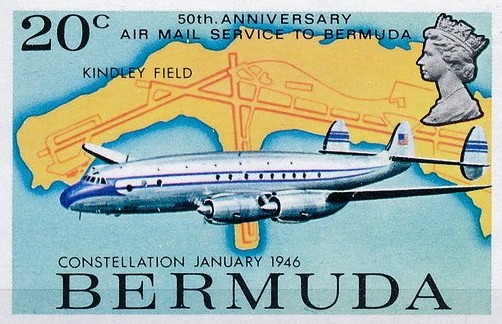
She was the first civilian Lockheed aircraft to land with passengers and airmail at Kindley Field. She replaced the Boeing Stratoliner aircraft used earlier. Pan Am had earlier used her for trial flights to Bermuda, hence the January not February date shown on the stamp.
![]()
It was an airline created by World War II veteran pilots in an effort to provide service into the previously untapped South American trade and passenger routes, commenced transatlantic services with a BSAA plane making the first operational flight from London Heathrow Airport to Bermuda and beyond. The airline operated mostly Avro aircraft: Yorks, Lancastrians and Tudors, and flew to Bermuda, the West Indies and the western coast of South America.
![]()
It was a direct result of the Bermuda Air Agreement negotiated in early 1946. It was originally known as Canadian Colonial Airlines until it was bought out by American interests. It was awarded the Washington, DC to Bermuda and New York to Bermuda routes in 1942 but did not fly that early. It flew DC-4 aircraft. Much later, the airline merged with and became part of Eastern Airlines.
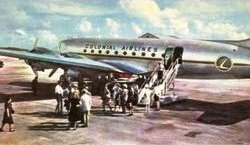

![]()
Lockheed Constellations operated by Pan American Airways and American Overseas Airlines (the new name for American Export) landed within 20 minutes of each other at a storm-torn Heathrow from New York's La Guardia. Passengers disembarked through army tents, as the control tower was the only brick building on site, to be greeted by Averill Harriman the US ambassador. This inauspicious beginning inaugurated what would soon become the most important international air route for both airlines.
![]()
She came with 8 Bermuda-bound passengers. She was the Lancastrian G-AGWI "Star Land." She landed at Kindley Field as her second stop, after Santa Maria. She was en route to Nassau, Mexico City, Belize, Panama, Jamaica and Trinidad, on her proving flight from London. The Lancastrian aircraft were converted World War II vintage Lancaster bombers. It was first under the name of British South American Airways (BSAA) instead of Imperial Airways that Bermuda was first serviced by these commercial, regularly-scheduled civilian land-based aircraft.
World War 2 gave a temporary boost to flying boats used by remote islands and hard to get to places, it also was instrumental in their demise. It spurred by leaps and bounds the development of landplanes able to equal or exceed the payload and range of flying boats. It created hundreds of new airfields with long concrete runways. It provided the nucleus for national and international airports. The American military base built during the war years on Bermuda's St. David's and other former Bermuda islands had been planned for post-war civilian aircraft as well and had a runway capable of accepting even the largest military aircraft. The days of the flying boats were nearly over for Bermuda.
![]()
It was the official start of British South American Airways (BSAA) Corporation fortnightly London - Azores - Bermuda - Jamaica - Caracas service, with Avro "Lancastrian" aircraft. The first flight by the Lancastrian Star Guide, commanded by Captain Gordon Store.
![]()
The Canadian carrier Trans Canada Air Lines (the forerunner of what is now Air Canada) sent a 5-hour survey flight aloft from Montreal to Bermuda to determine the practicality of such a service. On board an early, not pressurized version of the Canadair North Star passenger air liner was a party of Trans Canada senior executives including the airline's President, Mr. Gordon R. McGregor. But it was decided by the board of TCA that the time was not yet ripe to begin a scheduled service to Bermuda. (See 1948). Also see the book It Seems Like Only Yesterday. The First 50 Years of TCA, now Air Canada. Philip Smith. Bermuda is mentioned prominently, starting with the flights of 1946 and 1948.
![]()
British South American Airways Corporation (BSAAC) began a series of trial flight refueled non-stop services between London and Bermuda. The Avro Lancaster aircraft G-AHJV was used and was refueled by another BSAA Lancaster based in the Azores. In the first test, the Lancaster aircraft, piloted by Air Vice Marshal D.C. T. Bennett, RAF (retired) of BSAA took off from London Airport and was refueled by a tanker aircraft operating from Santa Maria in the Azores. The 4,000 miles were flown in 20 hours. Operational messages for the trials were dealt with routinely by personnel of Cable & Wireless in Bermuda. Messages to Santa Maria on behalf of the refueling operators Flight Refueling Limited were handed in to the Cable & Wireless counter at London's Heathrow Airport. Similar arrangements were made from the Bermuda end for the return flight. The BSAA trials were carried out once weekly each way for a number of months. In flight communications arrangements were made by Cable & Wireless in London via its facilities at Fayal in the Azores and Bermuda. The test flights paved the way for subsequent flights by direct British Airways flights to and from Bermuda and later Bermuda New York flights with Boeing 747 Jumbo Jets. At one time during its interesting Bermuda history more than 63 years ago now, British Airways operated Bermuda to New York, Bermuda to London and Bermuda to the Caribbean flights.
![]()
Registration G-AGWK, with 20 people (5 crew and 15 passengers) on a scheduled flight from London had to circle Bermuda's Kindley Field Airport for 90 minutes due to bad weather (thunderstorms). During landing attempt the aircraft struck a radio mast. No fatalities.
![]()
She was the former Pan Am Boeing 314 Capetown Clipper (NC 18612), renamed Bermuda Sky Queen when she was taken over by non-scheduled carrier American International Airlines and put on the Poole UK) to New York route, via Foynes and Gander Lake. Most of the passengers were British delegates going to the United Nations. After severe and sustained high winds, the aircraft landed in the North Atlantic, near a combined weather and warship. Passengers were transferred to the ship in heavy seas via a line but the aircraft collided with the ship. Still afloat but a hazard to shipping, she was finally sunk by gunfire from the same American warship, the U. S. Coast Guard cutter Bibb.
It was a combination ocean
station patrol and search and rescue operation that brought Bibb and her crew
international recognition when, while operating on Ocean Station Charlie, the
Bermuda Sky Queen was forced to make a landing during a gale with high winds and
in rough seas when the flying boat ran low on fuel. The Bibb, under the command
of CAPT Paul D. Cronk, had picked up an aircraft on radar heading west at 0232
(GCT) on 14 October 1947. It was the Boeing 314 flying boat Bermuda Sky Queen
(NC-18612), on a trans-Atlantic flight from Foynes, Ireland to Gander,
Newfoundland with 62 passengers and 7 crew on board. After flying beyond Bibb,
the pilot of the flying boat, Captain Charles M. Martin, decided to return to
the cutter to attempt an emergency landing because unexpectedly strong head
winds had caused the aircraft to consume too much fuel for them to make landfall
safely. After establishing communications with Bibb, Martin made a successful
landing in the 30-foot seas at 1004 (GCT) near the cutter. After maneuvering
close to the Bibb to secure a mooring line, the flying boat lost control and
collided with the cutter's hull, damaging the nose of the aircraft as well as
both wings and their attached floats.
With the waves cresting at 30 feet and the cutter rolling 30 to 35 degrees,
getting the passengers and crew of the Bermuda Sky Queen aboard Bibb proved to
be a tremendous challenge. Attempting various methods, including using a pulling
boat and various rubber rafts from both the cutter and the flying boat, three
passengers of the latter volunteered, only two hours before sunset, to attempt
to make it to the cutter using one of the flying boat's small rafts. The Bibb
laid down an oil slick downwind of the Bermuda Sky Queen prior to crossing her
bow to create a lee for the three men. They then began paddling towards the
cutter, but the seas were too great. As they cleared the flying boat, Bibb
drifted as close a practicable and threw lines to the men, bringing them safely
aboard. This method would prove impossible for the women and children on board,
so the cutter launched her motor surfboat that towed a 15-man raft to the Queen.
Using that raft as a bridge between the flying boat and the motor surf boat, the
Coast Guardsmen managed to save 28 persons in three trips and get them back to
Bibb. On the fourth trip, the surfboat, taking on water after being battered
against the hull of Bibb, began to sink. Fortunately Bibb was able to pull all
21 survivors and Coast Guardsmen on board the surfboat and in the raft to
safety, leaving 22 on board the Queen. One more attempt was made with a pulling
boat that night, but again the rough seas and darkness prevented their success
and captains Cronk and Martin agreed to wait until the next morning to save the
remaining passengers and crew.
The following morning the seas had abated somewhat and Cronk ordered a rescue
attempt with his personal gig. After one successful trip, the gig's engine broke
down and the Coast Guardsmen once again launched a pulling boat. The pulling
boat successfully rescued the remaining passengers and crew and the captain's
gig finally got its engine going again and both boats were then brought back
aboard Bibb. Cronk and Martin agreed that it was impossible to tow the Queen to
safety and Cronk then ordered her sunk as a hazard to navigation. Obtaining
permission to leave the ocean station and return to Boston with all of the souls
who had been on board the Queen, the cutter arrived to a hero's welcome. The
rescue demonstrated the utility and importance of the ocean station program and
historian Robert E. Johnson noted that "The Bermuda Sky Queen incident must
rank with the Coast Guard's outstanding rescue feats."
![]()
Registration G-AGWG. With 16 people on board (4 crew and 12 passengers) experienced an engine fire at 9,000ft shortly after take-off from Bermuda's Kindley Field en route to Santa Maria-Vila do Porto Airport (SMA). This engine was shut down, and the aircraft returned to Bermuda. Premature selection of full flaps down caused the aircraft to undershoot the runway. No fatalities.
![]()
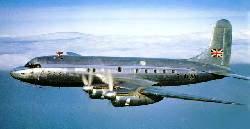 The British
South American Airways civilian aircraft Star Tiger (registration G-AHNP) was
lost. It had logged just over 500 flight hours. The plane was flown and
commanded by Capt. B. W. McMillan, and copiloted by both Capt. David Colby and
C. Ellison, all experienced pilots.
The Star Tiger was en route from England to Bermuda,
but had a fuel layover in the Azores. At 03:15 hours, Capt. McMillan requested a
bearing on Bermuda. The request was routine, and there was no panic or cause for
alarm. After receiving the bearings, Capt.
McMillan gave an estimated arrival time at 05:00. That was the last contact with
the Star Tiger. Bermuda went on the alert after
05:00. The British Civil Air Ministry launched a search and full scale
investigation, but no signs of the Star Tiger, or her 29 passengers and crew
were ever found. A merchant ship, SS
Troubadour, had reported seeing a low flying aircraft with lights blinking about
halfway between Bermuda and the entrance to Delaware Bay, which meant that if
the aircraft was Star Tiger, then it had gone well off-course from Bermuda.
Star Tiger had reported in one of its messages that it
was flying at an altitude of 2,000 feet, ostensibly to control a mishap should
the cabin lose pressure, but at that altitude there would have been no time to
issue a distress call should the aircraft have been forced to ditch at sea.
The UK Civil Air Ministry later issued this press
release into the incident: "In closing this report it may truly be said
that no more baffling problem has ever been presented for investigation. In the
complete absence of any reliable evidence as to either the nature or the cause
of the accident of Star Tiger the Court has not been able to do more than
suggest possibilities, none of which reaches the level even of probability. Into
all activities which involve the co-operation of man and machine two elements
enter of a very diverse character (sic). There
is an incalculable element of the human equation dependent upon imperfectly
known factors; and there is the mechanical element subject to quite different
laws. A
breakdown may occur in either separately or in both in conjunction. Or some
external cause may overwhelm both man and machine. What happened in this case
will never be known and the fate of Star Tiger must remain an unsolved
mystery."
The British
South American Airways civilian aircraft Star Tiger (registration G-AHNP) was
lost. It had logged just over 500 flight hours. The plane was flown and
commanded by Capt. B. W. McMillan, and copiloted by both Capt. David Colby and
C. Ellison, all experienced pilots.
The Star Tiger was en route from England to Bermuda,
but had a fuel layover in the Azores. At 03:15 hours, Capt. McMillan requested a
bearing on Bermuda. The request was routine, and there was no panic or cause for
alarm. After receiving the bearings, Capt.
McMillan gave an estimated arrival time at 05:00. That was the last contact with
the Star Tiger. Bermuda went on the alert after
05:00. The British Civil Air Ministry launched a search and full scale
investigation, but no signs of the Star Tiger, or her 29 passengers and crew
were ever found. A merchant ship, SS
Troubadour, had reported seeing a low flying aircraft with lights blinking about
halfway between Bermuda and the entrance to Delaware Bay, which meant that if
the aircraft was Star Tiger, then it had gone well off-course from Bermuda.
Star Tiger had reported in one of its messages that it
was flying at an altitude of 2,000 feet, ostensibly to control a mishap should
the cabin lose pressure, but at that altitude there would have been no time to
issue a distress call should the aircraft have been forced to ditch at sea.
The UK Civil Air Ministry later issued this press
release into the incident: "In closing this report it may truly be said
that no more baffling problem has ever been presented for investigation. In the
complete absence of any reliable evidence as to either the nature or the cause
of the accident of Star Tiger the Court has not been able to do more than
suggest possibilities, none of which reaches the level even of probability. Into
all activities which involve the co-operation of man and machine two elements
enter of a very diverse character (sic). There
is an incalculable element of the human equation dependent upon imperfectly
known factors; and there is the mechanical element subject to quite different
laws. A
breakdown may occur in either separately or in both in conjunction. Or some
external cause may overwhelm both man and machine. What happened in this case
will never be known and the fate of Star Tiger must remain an unsolved
mystery."
![]()
Began in 1948 and from an early stage had Americans from Kindley AFB and some aviation-qualified Bermudians or those who married Bermudians, as members. Several, such as Sidney Stallard, flew a Piper Cub or similar, married Bermudians and raised local families. The club followed the pattern of many other flying clubs elsewhere in the USA and word of offering USA-accredited flying instructions for base military and civilian personnel from private pilot to air transport pilot through FAA certified courses. Classes were at regular intervals throughout the year for club members.
![]()
A pioneering transatlantic route was started by Cuban airline Compañía Cubana de Aviación S.A. between Havana and Madrid (via Bermuda, the Azores and Lisbon) using Douglas DC-4 Skymaster aircraft. The DC-4 was Cubana's first four-engine aircraft, and it required five cockpit crew members to operate (captain, first officer, flight engineer, navigator and radio operator). The DC-4 that started the transatlantic route had a pressurized cabin and was christened "Estrella de Cuba" (CU-T188), see photo below. A second DC-4 was christened "Estrella de Oriente" (CU-T397) and replaced the DC-3s on Cubana's Miami route. It was also used on the Bermuda route. A majority share in the airline was then held by Pan American Airways.
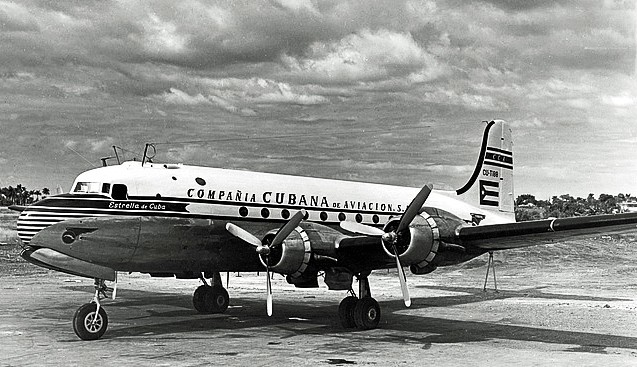
Photo courtesy Compañía Cubana de Aviación S.A.1995.
![]()
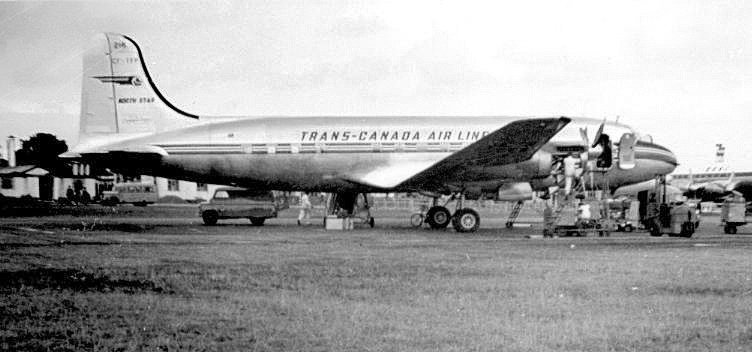
The
Bermuda Government - and travelers throughout
Also see the book It Seems Like Only Yesterday. The First 50 Years of TCA, now Air Canada. Philip Smith. Bermuda is mentioned prominently, starting with the flights of 1946 and 1948.
![]()
Formed by Bermudian Flight Lieutenant Hugh Watlington, DFM, RAF, who during World War 2, flew bombers. It gave air tours for $6 a person.
![]()
BSAA was then a subsidiary of the British Overseas Airways Corporation. It introduced yet another ambitious service. On the westbound route, the airline begin a new scheduled service from London, with stops at Keflavik in Iceland, Gander in Newfoundland, Bermuda, Jamaica, Barranquilla, Lima, Santiago and Buenos Aires. The first of those flights employed Tudor 4 aircraft (see photo).
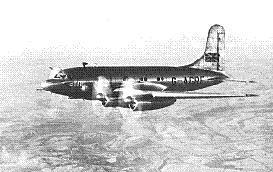
![]()
Almost a year to the day after the loss of Star Tiger, the airliner Star Ariel of British South American Airways was lost. She departed Bermuda for Kingston, Jamaica on this date carrying seven crewmembers and 13 passengers. Shortly after take-off, her pilot, Capt. J. C. McPhee, radioed in the following report: "I DEPARTED FROM KINDLEY FIELD AT 8:41 A.M. HOURS. MY ESTIMATED TIME OF ARRIVAL AT KINGSTON 2:10 P.M. HOURS. I AM FLYING IN GOOD VISIBILITY AT 18,000 FT. I FLEW OVER 150 MILES SOUTH OF KINDLEY FIELD AT 9:32 HRS. MY ETA AT 30° N IS 9:37 HRS. WILL YOU ACCEPT CONTROL?" And then later Capt. McPhee reported: "I WAS OVER 30° N AT 9:37 I AM CHANGING FREQUENCY TO MRX." Those were the last transmissions from the Star Ariel, and she was never heard from again. More than 70 aircraft and many ships were involved in a search between 100 and 500 miles south of Bermuda, search vessels including the aircraft carriers USS Kearsage and USS Leyte, and the battleship USS Missouri, involving upwards of 13,000 men. No sign of debris, oil slicks, or wreckage were ever found. Both this incident and the one a year earlier later prompted the use of the Tudor IV aircraft to be discontinued.
![]()
To much acclaim from Bermuda for this airline that had pioneered flights to Bermuda via flying boats in the 1930s..
![]()
After arriving at KAFB, it became Flight D, 6th Rescue Unit then Flight D, First Rescue Squadron. The unit flew converted SB-17 bombers which carried, slung under their bellies, lifeboats dripped to the ocean by parachute.
![]()
From Spain, Iberia periodically used Bermuda as a fuel stop when wind conditions prevented aircraft from Venezuela, after a passenger stop in San Juan, Puerto Rico, from refueling at Santa Maria in the Azores, en route to Madrid. Iberia was the first airline to establish an air link between Europe and South America after World War II.
![]()
Weekly freight services were flown from London and Nassau-based Yorks flew passengers via Bermuda to destinations that included Miami, Santiago and Havana.
![]()
In inexplicable circumstances.
![]()
They continued until at least 1955.
![]()
The US Naval Station at Southampton was established instead.
![]()
A Bermudian, his two sons and eight US Marines were rescued after two days adrift 60 miles off Bermuda in a disabled motor launch. The party was sighted by an SB-17 aircraft from the Kindley AFB Bermuda and eventually picked up by the Royal Naval vessel HMS Bigbury Bay.
![]()
Especially when bad weather required them to make unscheduled fuel stops.
![]()
Heavy landing near US NOB, Bermuda. 4 dead, four survivors.
![]()
From 1951 to 1954 Hal Susskind was a USAF Major based at Kindley AFB Bermuda with the Air Rescue flight. He participated in a life saving mission. He was the navigator on an SB-29 which flew 1000 miles out of Bermuda and acted as the Bombardier to make a night drop of Blood Plasma on the deck of a Swedish freighter to save a seaman's life. Also aboard were Tom McGrain (navigator) and George Welch (commander).
![]()
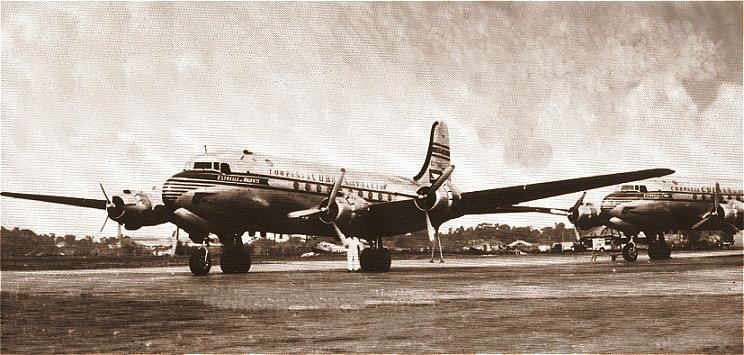
Compañía Cubana de Aviación S.A. 1995
Cubana's "Estrella de Oriente" DC-4 registration CU-T397 that first flew in 1944 suffered a fatal accident over Bermuda on its way from there to Havana-Rancho Boyeros Airport (HAV/MUHA), Havana, Cuba, only 3 miles after leaving Bermuda. All 32 passengers died, plus Capt. René Ayala, who commanded the aircraft and all other 5 crew members. A dramatic rescue operation was mounted from Kindley AFB Bermuda to save the passengers of the stricken Cubana Airlines aircraft which took off from the Civil Air Terminal but crashed into the waters of Castle Harbour at the end of the runway at about 4.30 pm. Bermuda had been well prepared for such a rescue operation, due to the previous establishment at Kindley Air Force Base of crash boats imported and operated especially for such an emergency. Two US servicemen on board the 35-foot crash boat that went out to rescue the aircraft's passengers heard faint screams coming from the dark, oil-slicked water. They leapt overboard without lifelines or preservers, in an attempt to rescue the passengers. But despite their heroic efforts, and those of others, in rescuing four people, the balance of the passengers and crew of the stricken aircraft - some thirty seven people in all - perished from wounds incurred in the crash. A few weeks earlier, Pan American World Airways had released majority control over Cubana de Aviación to a group of Cuban businessmen headed by Mr. José López Vilaboy. They acquired most of Cubana's stock. Pan Am continued to hold the balance.
![]()
It was based there from 1953 to 1964 when replaced by satellites. It is now a reserve unit and members are called to active duty only when we are threatened by the brewing of a hurricane. During that time the unit was designated at different times as the 53rd or the 59th Weather Recon. Squadron. There were a number of TV news reports emanating from Kindley, including a major news event when newscaster Edward R. Murrow flew an actual hurricane mission with the unit.
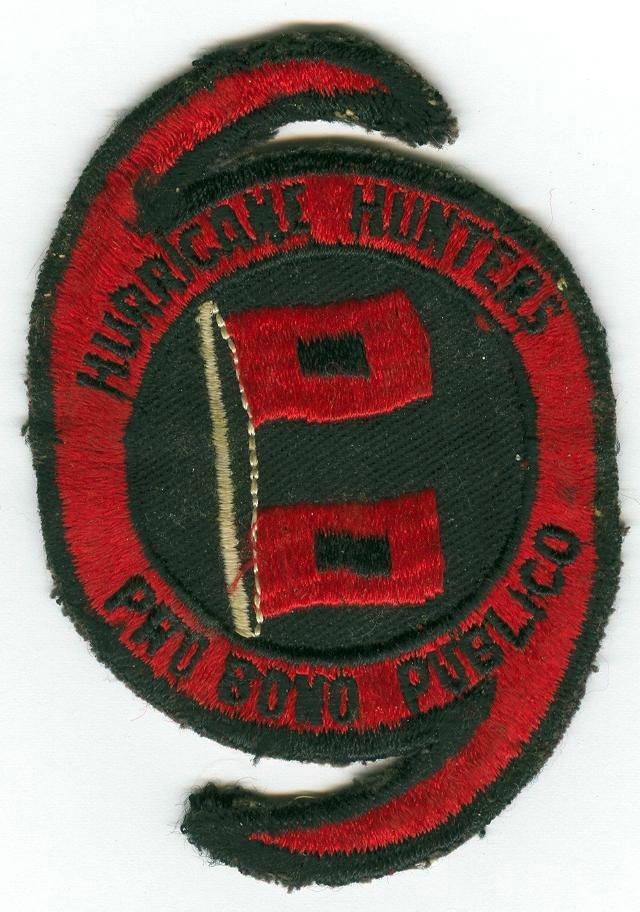
Two KAFB crash firefighters earned the US Soldier's Medal when they entered the burning aircraft. The men entered the blazing wreck without protective clothing to make sure that all passengers had been evacuated - which they had. But the aircraft was a total loss.
![]()
It was during the "First Summit Conference" in December 1953. Prime Minister Winston Churchill of Britain was reviewing, in Hamilton, the "Big 3" Armed Forces security guard. As he did so, two Bermuda Air Tours Luscome 8a aircraft, registration numbers VR-BAE and VR-BAH collided in Hamilton Harbour and crashed into the sea. VR-BAE was flown by 23 year-old Herbert Buswell, flying at the time in a civilian capacity but in military life one of the aircrew of VP-49 of the US Navy Base in Southampton Parish and a member of its US Navy Flying Club then based at that navy base (one of the aircraft belonging to the club was VP-BAS). Buswell was seriously injured. VR-BAH was piloted by 18 year-old Bermudian Philip Masters. It was badly damaged, but Masters managed a safe landing before the aircraft sank and managed to get ashore. Buswell's life was saved by a Bermudian, Mr. Stanley Ross Doe, who for his bravery was awarded the (British) George Medal. VR-BAH was salvaged and repaired later.
![]()
It was not resurrected until 1958.
![]()
She was the "Canton de Vaud," on a long-range flight from Zurich to Shannon, Gander, New York, Niagara Falls, Chicago, San Francisco, Mexico City, Havana, Bermuda and Santa Maria, then Zurich.
![]()
A Spanish airliner, an Iberian Airlines' Super Constellation, en route to Madrid from Venezuela via Puerto Rico, with 25 passengers and 10 crew on board, made an emergency gear-up landing at Kindley. The aircraft's captain and co-pilot were unable to lower and lock the landing gear and had put the plane into a four-hour circle over Bermuda, to use up fuel, then set down on the runway with crash-firemen from Kindley Air Force Base in close attendance. Sparks flew on impact but the firemen immediately blanketed the sliding aircraft with foam, preventing any fire. There was little damage to the aircraft superstructure and no injuries, thanks to the emergency procedures used by the Americans at Kindley AFB Bermuda.
![]()
It deployed KC-97's to Kindley for air refueling of B-47's (USA based) over the Atlantic.
![]()
BWIA was British West Indian Airlines.
![]()
The aircraft used was Vickers Viscount VP-TBK.
![]()
It crashed with all fatalities near Charleston, South Carolina
![]()
No survivors from 11-man crew
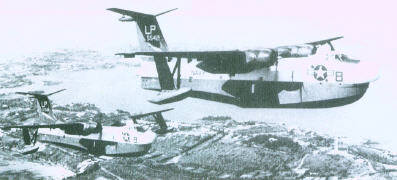
Two aircraft of this type over Bermuda at this time
The New York Times reported this missing US Navy patrol plane with ten men aboard was hunted by Navy and Coast Guard units in waters north of Bermuda. The plane was believed to be the one that a Liberian freighter had spotted in flames on the previous Friday night. An SOS message from the freighter at 8:51pm Friday reported "a plane overhead in flames" at a point about 400 miles east southeast of New York. The freighter also reported that an explosion had been heard and felt strongly aboard the vessel, the sighting about four miles away of what appeared to be a life raft with a light on it, and that the raft had become obscured by rain, heavy seas and darkness. Weather conditions at the time of the SOS were scattered clouds at 1,500 feet, showers with good visibility and moderate seas. The joint sea-air search was coordinated by the Navy's Eastern Sear Frontier command in New York State. The Commandant was Vice Admiral Frederick W. McMahon. Other Naval authorities in Norfolk, Va., and Bermuda, home base of the plane, presumed it was. There were no other reports of a missing civilian or military aircraft. The missing plane was the captioned twin-engine flying boat carrying seven enlisted men and three officers. The Navy said the craft radioed its last position report at 8:30 pm Friday. The United States Naval Station in Bermuda, where the plane was assigned to Navy Squadron VP 49, reported the craft's last position report as 350 miles north of Bermuda. The plane had left Bermuda on a patrol flight with enough fuel to keep it aloft until 6:30 am next day. The search was begun by three Coast Guard aircraft and a cutter, the Chincoteague. Also joining the search were two Navy destroyers and six Navy planes. These were four other P5M's stationed in Bermuda and two P2V Neptune patrol bombers from Maryland.
The Navy in Washington announced that missing from the aircraft were Petty Officer 3/C Wendell Frederick Beverly, son of Francis Louis Beverly, Ballou Lane, Williamaton, MA; Petty Officer 3/c Billy Gene Comer, son of James Vester Comer, Blossburg, AL; Petty Officer 3/C Jesse William Grable, son of Byford Otto Grable, 1305 Dover, Centralia, IL; Petty Officer 3/C Richard Woods Montgomery, son of Thaddeus Lemart Montgomery, 118 Colwyn Lane, Cynwyd, PA; Lieut. (jg) Charles William Patterson, husband of Billie Lawson Patterson, Naval Station, Bermuda; Petty Officer 2/C Lyle Freeman Quimby, husband of Karin Mae Quimby, Beachcrest Cottage, Rural Hill Paget, Bermuda, and son of Mrs. Earl Quimby, 3036 Colfax, North Minneapolis, MN; Leut.(jg) Cyrus Eugene Reid Jr., son of Mary Marshall Reid, Edgewater Drive, Dallas 5, TX; Airman Bobbie Lee Sanders, son of Mary Frye, 312 West 9th Street, Houston, TX; Comdr. John Milton Sweeney, husband of Mary Mathewson Sweeney, Mimosa Cottage, Warwick, Bermuda; Petty Officer 1/C Robert Wayne Taylor, husband of Shirley Marea Taylor, Elys Harbor Apartments, Somerset, Bermuda, and son of Mrs. Phillip Yedlik, Route 2, West Liberty, OH.
![]()
This British independent airline managed by Harold Bamburg was registered in early 1958. Its first aircraft was the Vickers Viscount 805 VR-BAX. Named "Enterprise," she carried the title "The Bermuda Airline" on her port side. By the end of 1959, she had carried nearly 10,000 passengers on the New York run.
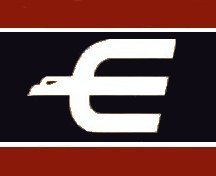
Eagle Airways aircraft in Bermuda
![]()
BOAC resumed services to South America with twice-weekly London-Bermuda-Trinidad-Barbados-Caracas service operated by Bristol Britannia 312 aircraft including G-AOVL.
![]()
It began immediately following delivery of its second Viscount, VR-BAY.
![]()
The pilot ejected from his plane after his engines flamed out. But he landed in the Atlantic, only 40 miles from Bermuda. A helicopter from Kindley AFB Bermuda scooped him out.
![]()
![]()
Without loss.
![]()
Two USAF F-101 fighter pilots were in a mid-air collision 840 miles east of Bermuda. They owed their lives to an alert weather reconnaissance aircraft crew at Kindley. It heard their distress signals from many miles away and located them. Stu Murphy and Bill Swanson were the weather reconnaissance pilots who located the downed F 101 pilots and guided the US Coast Guard cutter Medoza - based in Bermuda at the time - to their rescue.
![]()
Totally burnt out on landing. All 17 crew survived including Lt. D. J. Florko, USN.
![]()
Work began on it in 1959. The NASA station was at the end of Mercury Road on Cooper's Island, on the southeast tip of the former base, (adjacent to what is now Clearwater Park). Many airmen and locals were employed to help complete the construction on time. Bermuda became an important part of the NASA worldwide tracking network and initially its primary responsibility was computer monitoring and along with Cape Canaveral could abort a mission on the downrange before going into orbit. The Atlantic Ocean abort landing area was between Bermuda and the Canary Islands. The seven Mercury astronauts, Shepherd, Grisssom, Glenn, Carpenter, Cooper, Slayton and Schirra were frequent visitors to NASA Bermuda in 1960 & 1961.
![]()
It operated every 6 weeks with Britannia 312 aircraft.
![]()
A Kindley AFB-based weather reconnaissance aircraft on a mission was diverted to its aid, found it actually 90 miles north of Bermuda and established a true position. A rescue squadron SC-54 from Kindley relieved the WB-50 and escorted the airship to Bermuda. But it took 4 hours to make the 90-mile journey for the airship was fighting strong southerly winds and once it had to deviate to the west to avoid a waterspout. It arrived at 2 am December 13, took on 160 gallons of fuel winched up to it from the ground, but had to wait until 7:30 pm for surface winds to drop enough to let it land, with no damage.
![]()
This occurred after the severing of relations between the USA and Cuba after the Fidel Castro-led Cuban Revolution. Cubana - Compañía Cubana de Aviación S.A. -had first started to fly to Bermuda in 1948 and in 1952 had suffered a major incident in Bermuda. But the service had continued. Now, they stopped. As a result of the stoppage, Cabana had no option but to switch from Bermuda to Gander, Newfoundland and Shannon, Ireland stops on Cubana's Prague route (Gander only on the Madrid route). The Bermuda stop on the outbound and Azores on inbound flights had been essential because Cubana's British-made Britannia aircraft did not have the necessary range to fly nonstop to and from Europe. Fortunately for Cubana, the Canadian and Irish governments provided landing rights and refused to bend to U.S. pressure, especially when Czechoslovak Airlines (CSA) started to operate its own services on the same route (coordinated with Cubana's). The denial of those rights by Canada and Ireland would have forced Cubana to discontinue its transatlantic routes.
![]()
Both were uneventful.
![]()
It cost the USA $5 million to build. For fiscal and diplomatic reasons, local workers were used as much as possible to build the station, and NASA employed 60 contractors and 20 Bermudians to operate it. Located on a 77-acre rock-coral shelf just off of Saint David's Island on the northern shores, the main station was an eastward extension of Kindley Air Force Base and managed by the US Air Force. Its use dated back to a World War II agreement between President Roosevelt and Prime Minister Churchill. A smaller site was in Town Hill on the main island. I It was part of the NASA Spaceflight Tracking and Data Network at more than 24 locations across five continents. It was used for 37 years as a tracking and communications facility for various space programmes, including the Mercury and Apollo missions and space shuttle flights because of its key geographical position in relation to launch trajectories for space vehicles blasting off from Cape Canaveral in Florida. Alan Shepard was one of the NASA astronauts assigned to Bermuda.
The NASA Bermuda station manager was Bill Way, who helped set it up and played a key role in space exploration by tracking shuttle missions. His team's job included monitoring shuttles every 90 minutes as they came around the earth, and receiving scientific data transmitted by units left on the moon following lunar missions. Arriving in Bermuda from California with childhood sweetheart Margie and deciding never to leave, Mr. Way had seven children, two of whom died in tragic circumstances. He had a lifelong interest in science and engineering. He was involved in Apollo programmes. When they were little he would tell his children the stories about them and the children would get to meet the astronauts. He was also well-known on the local tennis circuit for his dedication to the Bermuda Lawn Tennis Association. Bermuda was one of NASA's first stations built on foreign soil and was also one of the most critical.
With the exception of Cape Canaveral, it was the most complex and important of the 15 Mercury Space Flight Network (MSFN) ground stations. The Mercury Atlas flight path was almost directly over the island, which enabled a brief but essential 25-second window to track and make decisions about its status as it ascended into orbit. The vital determination to abort or continue a flight was known as "Go/No Go". During the launch of an Atlas rocket- an Air Force Intercontinental Ballistic Missile used to launch the Mercury astronauts and the NASA's early large satellites, a decision to continue or abort had to be made in only a 30- to 120-second window after the rocket's main engine had cut off. The failure rate of the Atlas booster in those early days was very high - about 50 percent - so aborted missions were common. The Bermuda station was established to keep an eye on every Cape Canaveral launch and the first critical phases of the flight downrange, making it a key station during the launch phase of any mission. The control centre at Bermuda provided reliable communications and controls in the event that it became necessary to make abort decisions. Many mathematical and trajectory experts believed such a "short arc" solution would be impossible, but data analysis, some of it generated by the Bermuda tracking station, determined that, even with such a small timeframe, a spacecraft could be turned around and its retrorockets fired so that it could reenter in the Atlantic recovery area before reaching its point of impact on the African coast.
During Project Mercury, NASA's first man-in-space programme, the network was not well-centralized and communication was done by sometimes-unreliable teletype, so flight controllers were dispatched to most of the primary tracking stations in order to maintain immediate contact with the spacecraft from the ground. Astronauts also acted as capsule communicators (known as Capcoms) at various sites. Donald K. (Deke) Slayton, head of Flight Crew Operations at Houston's Manned Spacecraft Center, was said to have assigned astronauts to Bermuda (as well as sites in Hawaii, California, and Australia) as Capcoms to give them some much-needed rest and relaxation in beautiful places. Later, in 1963, to prepare for sending astronauts into space, an ocean floor cable capable of carrying 2,000 bits-per-second of digital information was laid to connect the new station on Bermuda with Cape Canaveral. This link continued to serve the Bermuda Station well into the Space Shuttle era. The Bermuda station was overhauled in preparation for the lunar landing programme. As it had been on Mercury and Gemini, Bermuda would be an essential station immediately after launch. As the first station to electronically see the rocket, operators could observe most of the second and third stage burns at high elevation angles. Bermuda monitored the ascent of the Saturn V into orbit and provided the critical "Go/No Go" data to Mission Control for flight continuation or a decision to abort the mission.
In March 1965, a request was submitted for a $1.6 million consolidation and upgrade to the MSFN facility on Bermuda so it could meet the combined requirements for projects Gemini and Apollo. All of the various telemetry facilities scattered around in pre-fabricated metal structures and trailers on Town Hill and Cooper's Island were to be consolidated. The original facilities also were corroded by years of sea salt and moisture. An air conditioned, 1,100-square meter Operations Building was built and a 300-square meter Generator Building housed the diesel generator. Next to the USB antenna, a small building contained the hydro-mechanical equipment that pointed the massive antenna. Concrete foundations were dug for the dish and the collimation tower. Extensive cabling was installed, and a microwave terminal was relocated. 30 percent more maintenance and administration staff was added as well as 26 additional technicians as the site was ramped up to support Gemini and Apollo missions. When the Cooper's Island upgrade was completed, NASA dismantled the Town Hill telemetry site. Shuttle flights on easterly trajectories went all the way into orbit on their backs. In November 1997, Columbia, the Shuttle program's 88th flight, was the first to roll the entire stack from its usual belly-up to a belly-down position in a 40-second maneuver six minutes after liftoff. Known as a Roll-to-Heads-Up (RTHU) maneuver, it's performed prior to main engine cutoff so that communication with the contemporary space-based Tracking and Data Relay Satellite System (TDRSS) can be established some two and a half minutes sooner. Such a maneuver previously had been used only if Mission Control declared an emergency landing due to a failed main engine or the loss of cabin pressure during the crew's ascent into orbit.
This innovation meant that the Bermuda station was no longer necessary for the success of NASA launches. The decision to close the site was ultimately a financial one, as it saved NASA $5 million a year; coincidently the same amount required to build the station in 1961. With Bermuda closed, Merritt Island/Ponce de Leon became the only source of tracking data for the first seven minutes of each Space Shuttle launch. The phase-out of the Bermuda station in 1997 signaled the end of the era of the worldwide network of spaceflight tracking stations. Bermuda had supported every human spaceflight that NASA had flown, making the critical "Go/No-Go" call on 118 missions.
![]()
from Cubana for flights between Bermuda and USA.
![]()
It led to the destruction of Cubana aircraft at the airport in Havana, including one that used to call at Bermuda until January 1961.
![]()
Fortunately the crew bailed out before she hit the water, and all lives were spared. Now known as the Airplane wreck, she lies in only 25 to 30 feet of water close to the wreck of the ship North Carolina. Divers can still recognize many of the plane's parts such as her propeller, wings and parts of her fuselage.
![]()
Crew members Robert Carroll, Cameron Cooper,
Charles Dunaway, Lieutenant Commander Albert J. Tait, Erwin Thompson,
Charles Turner and David Wood, all Bermuda-based, perished. There were 3
survivors, rescued by Captain Arthur Knight aboard the U.S. Merchant
cargo ship USS African Pilot. The
three men picked up by the merchant ship were the only survivors of the ten man
LN3 crew. VP 45 members in
![]()
It was after he been partly trained here. He pioneered the space launches from the USA. Enos was considered the most intelligent of all of the trained chimps, which is why he was chosen for the mission. Unlike Ham, his elder "brother." Enos was not cuddly and friendly. He fought mightily against the veterinarians and operant conditioning, and was quick to bite so he was kept on tethers when not in training. While he was highly skilled at his tasks when he did them, early on he might complete his tasks only to turn on his trainers as soon as he was done. Enos was once locked in a metal box for a week, living in his own waste, in an effort to break him. It worked. Enos' mission was to attempt three orbits of the Earth for the Mercury-Atlas 2 mission. About five hours before the November 29, 1961 launch, the specially constructed primate couch in which Enos was secured was inserted in the spacecraft.
He was relaxed during countdown, and all of his bodily functions were normal. Then, a series of delays began, leading some in the control center to joke that Enos was sabotaging the mission because he had talked to Ham and did not want to go into space. When the rocket was finally launched, Enos fared well, withstanding a peak of 6.8 g's during booster-engine acceleration and 7.6 g's with the rush of the sustainer engine. The Atlas rocket delivered 367,000 pounds of thrust, nearly five times what human astronauts Shepard and Grissom had experienced; Enos was unfazed. At his press conference in Washington, President Kennedy got a round of laughter when he said, "This chimpanzee who is flying in space took off at 10:08. He reports that everything is perfect and working well." During the second orbit, the lever for the motor skills test malfunctioned and Enos was shocked rather than rewarded for each correct answer. Nevertheless, he kept pulling the levers, continuing to perform his required operations as he was trained to do, despite the repeated shocks. His suit overheated and the automatic attitude controls malfunctioned, so the capsule repeatedly rolled forty-five degrees before the thrusters would correct it.
Luckily for Enos, given his shocking predicament, mission control decided to end his flight. Three hours and 21 minutes after liftoff - 181 minutes of which he was weightless - Enos re-entered the Earth's atmosphere and landed in the Atlantic, south of Bermuda. Enos and his spacecraft were hauled aboard the Stormes an hour and 15 minutes after landing. Engineers scrutinizing the capsule found that it had held up well. So had Enos, though he'd ripped through the belly panel of his restraint suit, removing or damaging most of the biomedical sensors from his body, including those that were inserted under his skin. He also ripped out a urinary catheter while he waited in the capsule for pick-up. But once aboard the Stormes, he ate two oranges and two apples, his first fresh food since he'd been placed on a low-residue pellet diet. The destroyer dropped the chimpanzee astronaut at the Kindley Air Force Base hospital in Bermuda. The chimp was walked in the corridors and appeared to be in good shape apart from mysteriously high blood pressure, which Woolf speculates arose from Enos stuffing down his rage at his two years of mistreatment at the hands of humans. But, at least for a brief time, Enos was hailed as a hero by NASA and the press.
His composure at a press conference surprised reporters. Unlike Ham, Enos was unperturbed by the noise and flashing bulbs, perhaps because of all he'd already endured. On December 1, Enos was sent from Bermuda to Cape Canaveral for another round of physicals, and a week later he departed for his home station at Holloman, set for retirement. Thanks to Enos, mission managers concluded that a human could withstand space travel. An astronaut riding in the MA-5 spacecraft could have made the necessary corrections in flight to complete the three-orbit mission normally. On the date of Enos' flight, it was announced that Lt. Col. John Glenn would make the first manned orbital mission on February 20, 1962. Glenn orbited the earth in the Friendship 7 and became a huge celebrity. In his speech to Congress, he said he was humbled when the president's daughter, Caroline Kennedy, met him and her first question was "Where's the monkey?"
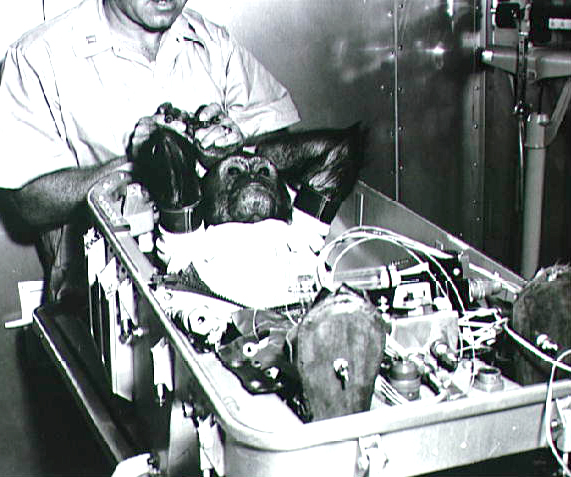
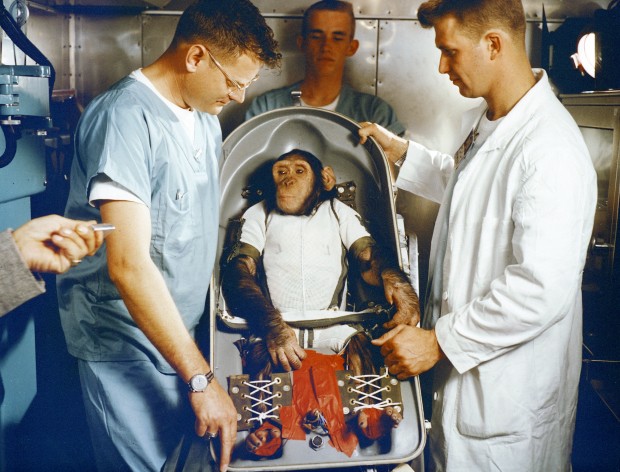
![]()
It arrived from Royal Air Force Lyneham, Wiltshire, UK. One of the passengers was a Bermudian officer cadet in the British Army on a RAF Indulgence Passage. This photo was taken of that arrival.
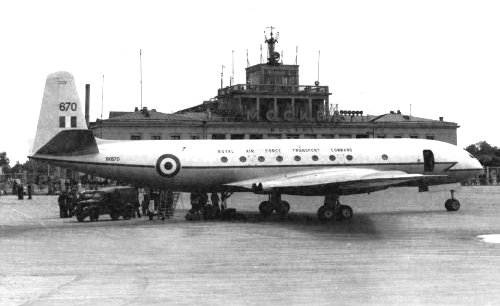
![]()
| 1962. October 27. A USAF Boeing RB-47H Stratojet reconnaissance aircraft operated by the 55th SRW, USAF from Forbes AFB, registration 53-6248, 4501389, crashed on the Astor Estate property at Ferry Reach in St. George's Parish during takeoff from Kindley AFB, Bermuda. All four crew were killed. They were Maj. William A. Britton (Aircraft Commander), 1st Lt. Holt J. Rasmussen (Co-Pilot), Capt. Robert A. Constable (Navigator) and Capt. Robert C. Dennis (observer). It was later determined the cause of the crash was an improper water/alcohol mixture that had been prepared by a civilian contractor in the RATOG (Rocket Assisted Take Off Gear) equipment. |
| 1963. Modern, high-speed, land-based P-3 Orion aircraft replaced the seaplanes at the US Naval Operating Station, Bermuda. |
| 1963. March 10. Bermuda Airlines was established by Rupert
Leatham. He and Martin Smith were directors. The company had one
seaplane – a six seater Cessna 185 Skywagon (similar to the one shown
in the photograph below). Leatham bought the Cessna
new, had floats fitted and flew it from New York to Bermuda on that day.
The airline lasted until 1965.
|
| 1963. BOAC became the first airline to offer standby fares on international air services - available on routes from the UK to Bermuda and the Caribbean. |
| 1963. 28 August. A United States Air Force Boeing KC-135A-BN Stratotanker that first flew in 1962 crashed into the North Atlantic ocean 300 miles west of Bermuda, after refueling B-47s. Mid-air collision with KC-135A 61-0319. All 6 crew died. |
| 1963. November. The US Coast Guard detachment in Bermuda transferred from the U.S. Naval Operating Station to Kindley, Bermuda, because greater range could be gotten from its HU-16 Albatross aircraft by land takeoffs rather than water takeoffs. |
|
1963. December 19. One of the last of the US Navy's
VP-45 P-5M operational seaplane flights was flown from Bermuda. The PPC
was Bob Palumbo, Jake was the co-pilot, Mike Levine manned the Nav
table, and the Plane Captain was probably Petty Officer Cox, ADR-1.
|
|
1963. December 24. The very last US Navy operational flight by a VP-45
P-5M seaplane was also the very last operational seaplane flight by any
Atlantic Fleet squadron, according to Don Hill, the PPC. It was a
7.2 hour patrol from Bermuda.
|
| 1964.
January 6. The very last seaplane flight of a US Navy Atlantic
Fleet squadron. It was a VP-45 4.1 hour ferry flight from Bermuda to
Weeksville, North Carolina. The aircraft was a P5M-2, LN-5, BuNo 135489.
|
| 1964.
January 10. The US Navy's VP-45 officially closed down Bermuda
operations, four days after the last flight. Since there were so few
P-5 plane commanders left during the last six weeks, they all got a lot
of BDA/JAX/BDA flights transferring squadron material.
|
|
1964.
March 20. Jerrie Mock, first woman aviator to fly solo around the world,
flew into Bermuda.
The pioneering around-the-world trip taken by pilot Geraldine (Jerrie) Mock earned her several records. She flew a single engine Cessna 180 christened the Spirit of Columbus. The aircraft was affectionately dubbed “Charlie,” and was jointly owned by Mrs. Mock and her husband, along with a friend. Beginning on March 19, 1964 in Columbus, Ohio, and ending April 17, 1964, also in Columbus, the 23,103 mile journey took the aviator 29 days, 11 hours, and 59 minutes to complete. A woman born at a time when sexism was still rife, Mrs. Mock has been quoted as saying, “I was never going to abide by man-made laws that said women couldn’t do something.” She began flying lessons in 1956 and earned her private pilot certificate in 1958. She attended Ohio State University, ranking as the only woman then enrolled in its aeronautical engineering program; in 1961, Mrs. Mock became the first woman licensed by Ohio to manage an airport. By 1962, she had accumulated over 700 flight hours, though she still had no over-water experience. The trip began almost as a joke, with Mrs. Mock complaining to her husband Russell about having nothing interesting to occupy her in 1962. Mr. Mock jokingly replied, “Why don’t you fly around the world?” Mrs. Mock took him at his word, and began to organise her flight in earnest, with her interest piqued after she discovered that only men had flown around the world and that there were no such records made by women, leaving her open to accomplish an important first for female aviators. What followed were 15 months of preparation during which she had a new 225 HP engine installed in her plane, as well as twin radio direction finders, dual short-range radios, a long-range radio, and a new compass. Two ferry tanks replaced the passenger seats inside the cabin, bringing the total fuel on board to 178 gallons, giving her an endurance of 25 hours and a range of 2,400 nautical miles Finally, the mother of three took off on March 19, 1964 from Columbus, Ohio, with the Kindley Air Base in Bermuda the first stop on her journey around the world. After leaving Bermuda, Mrs. Mock then stopped in the Azores, Morocco, Algeria, Libya, Egypt, Saudi Arabia, Pakistan, India, Thailand, Philippines, Guam, Hawaii, California, Arizona, and Texas before making her way back to Ohio. |
|
1964.
June 29. Two USAF aircraft, a Boeing HC-97 Stratofreighter version G
used for transport and search and rescue and a C-54 were flying near
Bermuda. The HC-97 was assigned to Kindley Air Force Base in Bermuda and
the crew included Technical Sergeant (E-6) Lowell (Micky) W. Belter, who
was assigned around January 1964, with his family, to the 55th Air
Rescue Squadron based at KAFB. He was a radio operator. His aircraft was
assigned to NASA to train for the recovery of Gemini spacecraft as the
last few Mercury flights had overshot the aircraft carriers by about 90
miles, and NASA was considering reassigning that mission to the US Air
Force from the US Navy. The aircraft flew in formation over Castle
Harbour and then moved about two miles south of Castle Island. One
plane had parachutists to practice jumping into the sea, while the other
aircraft was taking pictures. They were flying about 1,000 feet
above sea level. The first jumpers left the plane, and the C-54 banked
to offset the lost weight. The HC-97, with more powerful engines,
did not bank, and the two aircraft collided. This created such a
huge fireball that it was seen by many people on the beaches along
Tucker's Town and John Smith's Bay. There were 12 men aboard each
plane, for a total of 24. 19 of those personnel were killed, and
the five who survived where parachutists who had either just jumped or
were about to. Rescue craft were only able to recover nine bodies
(not including Mickey Belter). Astronaut Scott Carpenter, who was over
at the Navy base working on SeaLab, attempted to recover remains, but
the two mile depth prevented these efforts. About two weeks later, the
family of the late Mickey Belter left Bermuda on a USAF transport, to
return to the USA. The next year, the Gemini program began, and was able
to accurately land almost next to the aircraft carriers. Thereafter, the USAF never implemented the mission of recovering Gemini
spacecraft.
Here is an official statement supplementing the above: 1964. June 29. Two United States Air Force aircraft stationed at Kindley Air Force Base (KAFB), Bermuda, collided at sea of Bermuda during a NASA mission from Kindley AFB. 17 US servicemen died. They took off between 11:05 and 11:10 am local time. The first aircraft in the air was a HC-97G (serial number 522773), assigned to the 55th Air Rescue Squadron (55 ARS) at Kindley with 12 crewmen. The other aircraft was a HC-54D (serial number 4272590) assigned to the 57th Air Rescue Squadron (57 ARS) at Lajes Air Force Base in the Azores with 12 crewmen. The mission was for the aircraft to conduct an aerial photography mission to support the NASA Gemini program. It was necessary for the specially-trained para-rescue personnel (jumpers) to exit the aircraft, jump into the waters and install a flotation collar on the Gemini capsule. The planned mission was to have one aircraft with jumpers, while the other photographed the activities. The designated drop zone was about two to four miles south of Bermuda and about four to six miles from Kindley. Both aircraft arrived at the drop zone and because of the clouds, decided to fly the mission at 1,700 feet (below the clouds). Aboard each aircraft were photographers and para-rescue men. On the sea below, there were about three boats, one of which included a photographer, who filmed the aircraft’s operations. During the first run, the HC-97G took photos and the HC-54D was slightly forward and above, began deploying para-rescue men. Right-hand patterns were flown, and photos were shot with the sun behind the cameras and at an angle that would not reveal any land surfaces. After a few passes over the drop area with all four para-rescue men being deployed from the HC-54D, the aircraft changed positions. This placed the HC-54D slightly ahead and above and to the left of the HC-97G. After flying one dry run, and again in a right-hand pattern, two para-rescue men deployed (jumped) from the HC-97G. Seconds later, the two aircraft collided. The HC-54D suddenly banked to the right, colliding with the HC-97G, hitting the wing or midsection of the HC-97G and sheering both its wing and the tail section, and both aircraft immediately plunged towards the water. A total of 17 Air Force personnel were killed, including Major Martin Nisker, USAF, who was the navigator on the HC-97G that morning. There were 7 survivors, all who jumped prior to the collision. Only five of the 17 killed had remains recovered. |
| 1964.
November 26. Qantas, the Australian round-the-world airline, inaugurated
a route from London to Sidney via Mexico, with one of the stops being at
Bermuda.
|
| 1965.
April 2. British Overseas Airways Corporation (BOAC, later British
Airways) first flew its new VC-10 aircraft from Bermuda to New York. At
that time, BOAC was offering a Bermuda to New York and back service.
|
| 1965. July 27. US Navy aircraft Orion P-3A 45- LO 151380, which first flew in 1964, crashed at the US Naval Air Station Bermuda during landing. It collided with the ground during touch-and-go training. Reportedly the wrong fuel cut-off switch was activated. All four crew members died crew members died. The aircraft was written off. |
| 1966. Qantas, the Australian airline, opened another around-the-world route. This was named the Fiesta route and was from Sydney to London via Tahiti, Mexico City, and Bermuda. |
| 1966/67.
A Russian Aeroflot Tupolev Tu-114 Rossiya aircraft diverted to Bermuda (as Cindy Olden
(nee Farnsworth) writes: "Much to the
consternation of the folks at Kindley USAF base,
Bermuda next to us) all the passengers and crew were put up overnight at the St. George
Hotel. To the hotel staff's astonishment when they went to do the rooms
the next morning, every man had made his bed! When the enormous aircraft
(4 engine propeller job bigger than anything any of us had seen) arrived
it was before the 747 - the Pan Am maintenance men had to quickly knock
up some wooden steps to fit on top of the usual aircraft steps so the
passengers could get out! Next day, Pan Am airport staff had a tour
of "The People's aeroplane" - it was astonishing. First class
compartments were like those on the Orient Express! The crew and
Pan Am staff at the airport (of which I was one) exchanged gifts - the Russian chocolates were the best the
Pan Am staff and I had ever tasted, before or since."
Tu-114 It first entered service on October 1961. Most of the design work was done by a team of German scientists captured by the Russians in and after WW2. It was the most powerful turboprop ever built. It converted its shaft power into thrust through gigantic four-bladed counter-rotating propellers mounted in pairs on each engine. The main cabin could accommodate 120 to 220 passengers. The cabin was divided into several different sections. First of these was a forward cabin seating 42 passengers.. Next came a dining compartment with tables and seating for 48 and a galley compartment with elevators to bring food up from the kitchen on the lower deck. Further aft was a small compartment seating two of the five cabin crew and two small compartments providing additional seating or sleeping berths. Finally came the main cabin with accommodation for 54 passengers seated three abreast plus a compartment of washrooms, etc. The enormous plane was used on long-range domestic and international routes. Among the cities served by the Tu-114 were Delhi, Havana, Montreal, Paris, and Copenhagen. The Bermuda arrival probably came from or was bound for Montreal or Havana. |
| 1967. An Airline Operators' Committee - two representatives from each airline in Bermuda - was formed and met regularly with Bermuda's Dept. of Civil Aviation and Wing Commander Ware's (then the Director of Civil Aviation) deputy, Geoff Osborne, in attempts to iron out problems before they arose and make recommendations for better passenger handling and facilities. |
1969. March 14. North East Airlines - now Delta Air Lines -began service to Bermuda. Initially from Boston, flying Boeing 727s, more recently from Atlanta as well. For a while (certainly in 1994 but no longer) it had a direct flight between Bermuda and Hartford, Connecticut. |
![]()
| 1970.
August. The first Boeing 747 arrived in Bermuda in Pan American livery,
with passengers from New York and airmail. The Bermuda postage stamp
below was issued to commemorate that day.
|
| 1970s. Qantas flew into Bermuda to London. For a fairly short period. |
| 1971. BOAC began using Boeing 747s on the London to New York and Bermuda operation. |
| 1975.
June. Wing Commander E. M. Ware's old Luscombe 8a
Silvaire 1946 photographed in Bermuda
From the Don A Luscombe factory of USA, 1946. Two were in Bermuda, this one was owned by the late Wing Commander E. M. Ware, OBE. DFC. (see entry for January 1, 1946), the other by Colin Plant, a Bermuda resident. For many years, Ware's damaged plane was parked at the edge of the runway, across the fence from Kindley Field Road. This photo was taken in June 1975 when it was both in operable condition and located next to a bridge near the airport. Some time later, it disappeared. (See June 2008). It is not true that Ware prevented local pilots - who would easily have qualified in any other jurisdiction - from becoming local private pilots with their own working aircraft and giving flying lessons in Bermuda. The real facts are that the problem which existed at the time was one of air security. It was the height of the cold war and was entirely in the hands of the US Air Force later, Navy (concerned not with Bermuda but with the defence of their Bermuda bases) and to some degree the Bermuda Government. The USAF then the USN, both of which had total control over the airspace over Bermuda, declined to let civilian aircraft - other than US and international passenger aircraft - fly over the island - and they had absolute control, as Bermuda technically sublet the civilian air terminal and runway back from the US military operating the airport at the time. Ware's aircraft had been the only one allowed by the US military in Bermuda to photograph and draw up plans for the airport and to keep on flying, as long as the plane was on floats, and only at certain heights under certain conditions. No one in the BDA government of the day, or the US military in Bermuda or the US Consulate supported the concept of local pilots, it was a huge big NO for the reasons given earlier and Ware, responsible for aircraft licensing, was obliged to enforce the decision. |
| 1975. September 8. American Airlines began service to Bermuda. With daily non-stop service between Bermuda and New York (JFK International). It was when Pan American World Airways (which began flights to Bermuda in 1936 but no longer exists) and American Airlines agreed to orchestrate an airline route swap, whereby American would service Bermuda and certain Caribbean destinations (but not necessarily to and from each other) and Pan Am would service Hawaii and certain Pacific destinations (as Pan Am once did much earlier). |
| 1976. October. The
British Labour Government in London, pressured by Prime Minister Harold
Wilson, unilaterally terminated the Bermuda I agreement dating back to
1946 and announced that a revised one should be put in place by June
1977. This was widely criticized in the United States, where it was seen
as an attempt to return to the more restrictive ideas which the British
had favoured thirty years earlier and in Britain, where it was felt that
it would upset the American Government and damage the attempts to obtain
landing rights for the Concorde which British Airways was proposing to
fly into New York and Washington. The timing was certainly poor as it
preceded an US Presidential election and US negotiators might not be in
a position to reach any agreements for several months. |
| 1977.
July 23. Bermuda II was signed a Bilateral Air Transport Agreement between
the governments of the United Kingdom and the United States of America, as a
renegotiation of the original 1946 Bermuda agreement, following events
in October 1976. (See above). The
Bermuda II agreement was much less liberal than Bermuda 1.
Unlike Bermuda I, which was a rigid agreement set for all time, Bermuda
II was a framework agreement which would permit changes whenever
circumstances changed. Its
most significant change was that it replaced the airlines right to set
their own fares, subject only to a complex protest procedure by either
government with a new system in which fares were agreed by the two
governments directly. It restricted the number of airport gateways in
the United States to be served directly from London Heathrow. At the
same time, it permitted non-scheduled airlines to operate between the
two countries, using other airports, particularly the relatively new
airport at Gatwick. There was a complicated system of controlling
capacity on routes between the UK and the US. The British aim was to
provide a system under which airlines from each country could compete on
more equal terms. |
| 1981. Last flight of a flying boat to Bermuda. It was en route to Europe. A passenger was Bermudian Flight Lieutenant Hugh Watlington, DFM, RAF, who during World War 2, flew bombers and in 1948 formed Bermuda Air Tours Ltd. |
| 1983.
17th October. A British Airways Concorde flew from Bermuda to Orlando,
Florida. in 1 hour and 36 minutes.
When British Airways and Air France commenced SST Concorde services in 1976 to their major routes, including in BA's case to the Caribbean, Bermuda was not then and never became one of the destinations included. Bermuda's runway was easily long enough but may have been deliberate policy on the part of BA not to fly the world's most expensive-to-operate supersonic aircraft which carried only a relatively small number of passengers when compared to much more expansive aircraft on the London-Bermuda direct route which was BA's single most profitable route by far. Or it might have been in hope of commencing a supersonic new service between Bermuda and Orlando. But it is known that BA charter or regular flights stopped off in Bermuda on several occasions during Concorde's commercial lifespan (that lasted until 2003), including when the Queen flew to and from the Caribbean on her Jubilee tour. |
| 1986. January. A British Airways Concorde officially flew from London to Bermuda for the first time (but see entry above for 1983) after having been in service since 1976. The flight took just 53 minutes to cover the same distance the Cavalier flying boat did in 1936 for 20 hours. Despite this testing flight, a Concorde Bermuda to London service was not begun, most likely because the Concorde proved to be a loss-leader, not nearly as profitable. |
|
1987.
Bermuda issued the commemorative proof silver coin and postage stamps shown below to mark
the 50th anniversary of aviation in Bermuda:
|
| 1989. June 1. US Airways began service to Bermuda, when still known as Allegheny, flying from Baltimore to Bermuda and Philadelphia. It no longer offers Baltimore from Bermuda, Washington DC instead. |
| 1990. Under the terms of the Bermuda II Agreement signed in 1977 between the United Kingdom and USA, Manchester was added as a British gateway airport for transatlantic flights. |
| 1990. Eastern Airlines stopped service to Bermuda. However, it had established a 43-year record for non-stop longevity of service that only Air Canada was able to match - and beat - in 1997. |
| 1991. The
bankruptcy of Pan Am and TWA led to a major renegotiation of the Bermuda
II Air Agreement between the UK and USA, which allowed American
Airlines and United Airlines to take their places at Heathrow. Virgin
Atlantic was also given rights as a second British carrier to operate
services. |
| 1991.
Bermuda
Helicopters Ltd began operating in Bermuda. Initially in a
helicopter leased for two months from Pegasus Helicopters, Canada.
The brain-child of
Bermudian Mike Smatt, it provided a unique service to Bermuda, flying
tourists and business visitors around the island in a thrilling
opportunity for aerial tours and aerial photography, giving views of and
over Bermuda. In 1994 the business
acquired its own helicopter. Mike Smatt
wrote: "Fred
Littlejohn encouraged me to purchase a helicopter which would be based
in Bermuda permanently. Fred and I jointly owned the first
helicopter which was based in Bermuda. From that time, Bermuda
had a helicopter which was available twelve months a year. We called it "Spirit
of Bermuda." Flight operations included aerial tours, aerial
photography and law enforcement." Flights stopped in 1998. Mike Smatt reported:
"The decision was made to sell the
helicopter as we were unable to secure contracts over the winter months. Needless to say, it was a very sad moment for us after having
carried
over 6,000 tourists and provided an aerial platform for a tremendous amount of
aerial photography for the Department of Tourism. I have personally felt that
the aircraft could have been used far more Coastguard work, for Law Enforcement,
etc. but that
decision would have to have been made by the Government of Bermuda. In
any case, Fred and I were extremely pleased at having conducted over 5,000
flights in and around Bermuda during our tenure here without incident or
accident as well as having provided both the local and tourist community with
an absolutely beautiful perspective of Bermuda. It was extremely hard
work but well worth it."
|
| 1992. British Airways introduced dedicated service London-Bermuda-London. |
| 1993. The Canadian Forces Station Bermuda ended. (It began in 1963). |
| 1993. Bermuda
issued the postage stamp shown below to mark the 75th anniversary of the
formation of the Royal Air Force. The aircraft was the one that won
the Battle of Britain. The RAF had a base in Bermuda during WW2 and many
Bermudians served in the RAF, some with distinction.
|
| 1994. October. Under the terms of the Bermuda II Agreement between the United Kingdom and USA, certain regional UK airports other than London Gatwick, London Heathrow and Manchester previously allowed could be added for trans-Atlantic passengers. |
| 1995. March. The US Naval Air Base and US Naval Annex in Bermuda closed after press attention from Sam Donaldson of ABC News. They could no longer be justified after the end of the Cold War. They were closed at the same time as many other US military bases in the USA and beyond. The Bermuda Government took possession of all former military bases. |
| 1995. The Bermuda II air agreement was revised yet again. Although Bermuda II was much less restrictive than the original Bermuda agreement it replaced, it was still widely regarded as a highly restrictive agreement that contrasts with the principle of "Open skies" against the background of continuing liberalisation of the legal framework governing the air transport industry in various parts of the world. Broadly speaking, only a combined four airlines from the US and UK are allowed to operate flights between London Heathrow and the US. The two British carriers are currently British Airways and Virgin Atlantic. The American carriers were American Airlines and United Airlines. The US also approved Continental to fly to London Heathrow but the British did not recognize this route authority and, consequently, this service was not in operation (however, it was allowed to go to Edinburgh). However, the British did not obstruct Continental's codeshare agreement with Virgin Atlantic, which places Continental flight numbers in addition to its own on some Heathrow flights. Air India, El Al, Iran Air and Kuwait Airways were permitted to continue exercising their so-called "fifth freedom" traffic rights from Heathrow to JFK, which they had already enjoyed under the original Bermuda agreement. (Both El Al and Iran Air no longer exercise these rights, the former decided that it makes better economic sense for it to fly non-stop between Tel Aviv and New York. The latter's US traffic rights were withdrawn in the aftermath of the 1979 Iranian hostage crisis.) Similarly, Air New Zealand was allowed to continue using its fifth freedom rights between London and Los Angeles. |
| 1995. May 1. Bermuda's Civil Air Terminal officially became Bermuda International Airport. |
| 1998. British Airways began using Boeing 777s in flights from London to Bermuda and return. The BA schedule was increased to four flights a week from April. |
| 2003. March. The death in Bermuda of Wing Commander E. M. (Moe) Ware, Royal Air Force (RAF), B. Sc (Eng), DFC, OBE, initially seconded by the RAF as Air Advisor to the Bermuda Government. He was later responsible for the negotiation and design of the first Civil Air Terminal, subsequently becoming the first Director of Civil Aviation. He was married in May 1945 to Sylvia (''"Rosebud'') who attended the Bermuda High School for Girls. Sylvia was a keen participant of the Girl Guides, and during WWII worked as a Cipher Clerk and secretary at Admiralty House. They had four children. |
| 2006. October. Aircraft Owners and Pilots Association (AOPA), Bermuda formed Vector Limited. Following an idea hatched in 2004, 16 Bermuda-based pilots formed and activated this entity in 2006 to lease US plane Cessna N2148R for some months (the arrangement ceased in 2007). All 16 were members of AOPA. They had hoped to be able to use in Bermuda a light airplane retrofitted with a new technology diesel engine that burns jet fuel or diesel, and uses only half the fuel of the Avgas engines. The aircraft arrived in October 2006. Vector’s 2003 model Cessna 172 was a German-made, US-registered Thielert Centurion 1.7, 125 HP, jet A-1burning, compression ignition engine. It arrived from Epic Aviation, New Smyrna Beach, Florida, having flown non-stop on standard tanks from Elizabeth City, North Carolina. Flight time was approximately 5 hours. The Thielert offered FADEC (full authority digital engine control) computer diagnostics, a three-bladed constant speed propeller, and a turbocharger with intercooler. Best of all, it uses locally available jet fuel. Bermuda was - and still is - one of the very few places in the developed world and the only place referring to itself as a major international business center where tourists have never had a chance to see Bermuda by air from a local perspective using any any light aircraft requiring Avgas. In contrast, airports throughout the Caribbean (for example, Bahamas, St. Lucia, Antigua, Grenada, Jamaica, etc) have allowed this and have for many years the facilities to provide the fuel. (The US Navy and before it the USAF at Kindley USAF Bermuda (also Royal Navy base and Canadian Forces Station staff also in Bermuda once had a flying club until the US bases were closed in Bermuda in 1995 but until October 2006, following a policy initiated by the Bermuda Government, locals were not allowed to fly in Bermuda). |
| 2007. On April 16. Bermuda International Airport became the L.F. Wade International Airport in honour of the late L. F. Wade, at the time of his death the Progressive Labour Party Leader of the Opposition. |
| 2007. British Airways began daily summer service to Bermuda from London's Gatwick Airport and return. Winter service included 5 flights per week. |
| 2008.
March 30. The Bermuda II agreement between the UK and USA was
replaced in two stages, on this date and on June 24, 2010, by an Air
Transport Agreement between the European Union (representing 25 European
countries) and the United States. This provides for an Open Skies
regime, which is more liberal even than Bermuda I and Bermuda II. |
| 2008. March 30. Bermuda-registered aircraft crashes in UK. The Cessna Citation I crash near Biggin Hill aerodrome south east of London, was attempting to turn onto final approach having suffered engine problems. It came down on the edge of a residential area, hitting a house, but no-one on the ground was killed. The aircraft was VP-BGE, Bermuda-registered, that entered service in 1975, according to Flight's ACAS database. Owned by the UK division of US fixed-base operator Ross Aviation, the aircraft was powered by a pair of Pratt & Whitney JT15D-1 engines, and has notched up a total of 5,780h and 5,242 flight cycles. Both pilots and all three passengers died in the accident, which occurred shortly after take-off from runway 21 bound for Pau, France. The impact point was about 3.7km (2nm) north east of the threshold of Biggin Hill's runway 21, close to the extended centreline. Just after take-off the crew put out an emergency call to Biggin Hill reporting engine trouble, citing severe engine vibration. The aircraft hit a house in the village of Farnborough, Kent, [not the town associated with the international air show], but the residents were away. |
| 2008.
June. Wing Commander E. M. Ware's old Luscombe 8a Silvaire(1946) (see
reference on this website to June 1975) was found in pieces in a Bermuda
garden.
(See June 1975). Some time later, it disappeared and in June 2007 as this photo reveals, it re-surfaced in a number of rusty bits bill and small, scattered over the grounds of Palmetto House, Devonshire, a Bermuda National Trust property leased by Ware until his death. Photo kindly sent by Tom Singfield, author of the 2014 book Wings Over Bermuda. He is an Aviation Historian, from Horsham, West Sussex, UK, email tomsingfield@gmail.com and former London Gatwick flight controller. On August 7, 2009 the Luscombe airplane parts including those pictured above were turned over to BAS-Serco. At that time, BAS-Serco had been contracted by the Bermuda Government to provide air traffic control, ground electronics, airport maintenance services and the Bermuda Weather Service. It announced it intended to fund the restoration of the Luscombe aided by volunteer assistance from its team of employees at the L. F. Wade International Airport, Bermuda. See below. |
|
The late Wing Commander E. M. Ware's old Luscombe 8a Silvaire of 1946 photographed in Bermuda in 1975 when it was still operable 2010. February 1. Volunteers were requested to help restore this gem of Bermudian aviation history (see photos above) to its former glory. BAS-Serco began the restoration of the wreck (see right photo). a former seaplane owned by late Wing Commander E M 'Mo' Ware, OBE DFC of Bermuda. The abandoned aircraft was discovered by the Bermuda National Trust (BNT) during the renovation of Palmetto House, Devonshire, Wing Commander Ware's leased (from the BNT) home following his death in 2003. The Second World War senior RAF officer was seconded to the civilian government in 1945 where he oversaw the conversion of the military airfield into a Civil Air Terminal. He was then appointed Bermuda's first Director of Civil Aviation, and from 1951 to 1978 opened up the Island to modern air travel. Wing Commander Ware's 1946 Luscombe 8a Silvaire was originally imported by Hugh Watlington in 1952. He bought the plane together with Jim Babineau and Colin Plant, from Bermuda Air Tours in 1954. At one time the Luscombe was fitted with a wheeled undercarriage from a Tiger Moth, for flights at Kindley Field. Then in 1956 it was filmed for the movie 'Bermuda Affair' According to records the seaplane last took to the air more than 30 years ago but even in September 1987 it was still flyable. Unfortunately, that month Hurricane Emily broke its back when a falling casuarina tree hit VR-BAK at its Kindley Field base, 2ft ahead of its fin. Wing Commander Ware and his son David then took the wings to Palmetto House, but repairs were never completed. The dismantled plane lay scattered at the historic Bermudian property for years. The BNT's Director Jennifer Gray gave the parts to BAS-Serco, which then provided Bermuda's aviation services in the form of air traffic control, ground electronics, and airport maintenance services. Staff volunteers provided the restoration. |
| 2014.
The book Wings
over Bermuda – 100 years of aviation in the West Atlantic was
published. By
British aviation authors |
| 2015. May 13. A new business offering aircraft tours over the Island was about to take flight after almost a year of planning. (Helicopter tours had been provided earlier (1991) but did not survive and another short-lived venture commenced in 2007 but folded a year later). A four-seat, jet fuel-powered Cessna 172 sat at the airport poised for take-off thanks to a joint venture between Blue Sky Flights and Longtail Aviation. Businessman John Tomlinson of Blue Sky Flights cut through red tape and gained authorization to bring the aircraft to the Island for commercial use. It was hoped residents and tourists could take specialized tours and with trained pilots able to hire the craft privately and pilots-in-training will be able to use it to get flight hours under their belts. The Bermuda Tourism Authority supported and marketed the venture and the first flights were “imminent.” The Cessna will be able to carry up to four passengers depending on weight and will cost in the region of $400 to $450 for an hour-long tour or slightly less for a qualified pilot hire. Mr Tomlinson said he was inspired to offer the service by the Bermuda-based Aircraft Owners and Pilots Association. He formed the company Vector in Bermmuda in 2006 and brought a plane to the Island for trained pilots to fly privately. |
| 2015. October 14. Bermuda's America’s Cup races were seen from the air. New company Blue Sky Flights offered aerial packages and the best seats in the house as the Louis Vuitton America’s Cup World Series Bermuda races got under way. Blue Sky Flights Canadian-born pilot Heather Nicholds noted her business also offered a series of tourism packages, including specialized tours. Ms Nicholds, 33, has been flying since she was a teenager. The firm’s four-seater Cessna 172 recently came back into service after passing the tough annual air operating certificate. |
| 2016. August 11. British Airways is preparing to celebrate 80 years of service to the island next year. No airline has linked Bermuda to the outside world for longer and according to a senior manager at BA the relationship is only getting stronger. Colm Lacey, BA’s head of commercial, Gatwick, told The Royal Gazette that passengers on BA’s Bermuda service will disembark at London Gatwick Airport’s South Terminal from January next year, rather than the North Terminal. And he added that the airline was working with the Bermuda Tourism Authority to serve their mutual interest of boosting visitor numbers to the island. “From January 4, 2017, the Bermuda service will be flying to and from the South Terminal,” Mr Lacey said. “We will have a new area there and new lounge with a great view of the open runway. It will also be more convenient for many of our customers who use public transport as the train station is at the South Terminal. The 80th anniversary, coming in the same year as the island hosts the America’s Cup finals, presents great opportunities to attract more visitors from the UK. Bermuda is a very important route for Gatwick and for the airline,” Mr Lacey said. |
| 2017.
May 5. British Airways marked 80 years of service to the island with a
glitzy reception at the Hamilton Princess last night. The
eight-decade
partnership was celebrated by attendees who included Stephen Humphreys, BA’s head of global sales, John Rankin, the
Governor, Michael Dunkley, the Premier, and Simon Brooks, BA’s senior
vice-president of sales for North America (Photograph by Akil Simmons)
And the airline marked the occasion by announcing a limited-time 20 per cent discount on fares for Bermuda-London flights. Michael Dunkley, the Premier and John Rankin, the Governor, and some of the island’s major BA customers were among the guests who enjoyed a fashion show of sorts with models sporting the different BA cabin crew uniforms over the decades. Simon Brooks, BA’s senior vice-president of sales for North America, who oversees the airline’s Bermuda business, announced that customers could pay 80 per cent of the fare for flights connecting Bermuda and London across all classes to mark the 80th anniversary. This will apply to flights booked through May 14 for travel between August 4, 2017 and April 24, 2018. That means that fares will start from $780 round-trip in economy seats, including taxes and fees. Imperial Airlines, one of the predecessor companies that evolved into the modern BA, started off the Bermuda service in 1937, with a flying boat called Cavalier — but the route was not to London, rather to New York. London was considered too far from Bermuda for the Cavalier to fly. For that reason, the aircraft was sent to Bermuda in pieces, on board a ship from England, and assembled on the island. The Imperial Airlines flight cut the journey time from Bermuda to New York from 40 hours to five hours and first flew on June 12, 1937. In 1939, Imperial merged with British Overseas Airways Corporation, and three years later, as the Second World War raged, came one of the most famous episodes in BA’s Bermuda history, involving Britain’s Prime Minister of the time, Winston Churchill. In January 1942, Mr Churchill had visited the US and was on his way back to Britain. He took the BOAC Boeing 314 flying boat Berwick as far as Bermuda and the plan was for him to complete his Atlantic crossing aboard a British ship, which would take about another week. Mr Churchill was anxious to get back quickly and keen to fly the whole journey back to England. His request was eventually reluctantly agreed to by the Berwick’s captain, Kelly Rogers, and the plane made it back to land in Plymouth, As part of last night’s event, a photograph was displayed of Mr Churchill at the controls of the aircraft in Bermuda, with trademark fat cigar in mouth. Mr Brooks said Bermuda was a significant destination for BA and the route was among the longest-running continuous links in the BA network. “There are many destinations that have not lasted 80 weeks, so to last for 80 years is a great reflection of the strength of our partnership,” Mr Brooks said. And he promised that customers had many improvements to look forward to, in addition to BA’s move to its new home at London’s Gatwick Airport, the South Terminal, which will feature upgraded lounges, 40 per cent more floor space and play areas for children, Mr Brooks said more investments were coming. “In the next two years, the product will change,” Mr Brooks said. “In Club World, we will introduce new high-quality linens, pillows and duvets and we will be introducing a new upgraded seat. And we will also be investing in premium training for BA cabin crew in order to deliver a better quality of service to the customer.” He said the airline worked closely with BTA to increase the number of visitors to the island. Mr Dunkley said the island would continue to be “a blue-chip destination” and said that with the new hotels being built on the island, “the next 80 years are looking better than the first 80”. Also on display were vintage uniforms, part of a fashion show commemorating British Airways’ 80 years of service to Bermuda. Imperial Airways started the Bermuda service on June 12, 1937 with a flight to New York. British Overseas Airways Corporation took over the company in 1939; in 1974 it merged with British European Airways Corporation, to form British Airways. The pilot uniform worn on the first Imperial Airways flight started the show at the Hamilton Princess. Pilots on the flight wore khaki, considered more appropriate for tropical climates. There were only stewards on the first flight, and they changed into white coats for dinner service. A favourite piece brought by British Airways historian Mr Davies to the commemorative Bermuda function was a uniform from the late 1940s A floral paper dress from the 1970s was another highlight. It was quite a change from the more severe uniforms of previous days, which were inspired by Second World War military uniforms. Mr Davies worked for BA for 35 years, in reservations and then in complaints. |
| 2018. May 1. Air Canada, originally Trans Canada Airlines, celebrated 70 years of flying into and out of Bermuda. Leisure air arrivals from Canada climbed 20 per cent in the first quarter of 2018. Bermuda Tourism Authority chief executive Kevin Dallas announced the jump as officials celebrated the 70th anniversary of Air Canada’s service to Bermuda yesterday. Mr Dallas said the island had enjoyed “a comeback of Canadian visitors after several difficult years”. He told a press gathering at the airport: “In 2017, Bermuda experienced a 19 per cent increase in leisure air visitors from Canada. That is sizeable year-over-year growth and we think the island is well positioned to see further growth from Canada. Indeed, while our full results won’t be available until next week, we can reveal that in the first quarter of 2018 leisure air arrivals from Canada continued to climb — up 20 per cent over the same quarter a year ago.” Mr Dallas said Bermuda had partnered with Reach Global Marketing to bring more Canadian passengers to the island. He said: “A member of the Reach team was at the gate in Toronto this morning participating in an event much like this one — making sure Canadians know about this milestone.” Transport minister Walter Roban said: “In May 1948, Trans Canada Airlines began twice-weekly service to Bermuda. It was with pride for Canadians, as the service began with the first commercial aircraft built entirely in Canada — a 40-seat Canadair plane. Today, Trans Canada is now Air Canada and it carries up to four times as many passengers to Bermuda on a single trip. Aviation has changed substantially. But a few things remain true. This link has served many — including Bermudians and Canadians — successfully, steadfastly, safely. Here in Bermuda we are very grateful for that.” |
| 2020. March 25. British Airways, which like other airlines stopped flying to Bermuda during the Covid-19 pandemic, announced that once it was over, it would resume its Bermuda services but sooner or later from/to London Heathrow, not London Gatwick. |
![]()
Authored,
researched, compiled and website-managed by Keith A. Forbes.
Multi-national © 2020. All Rights Reserved